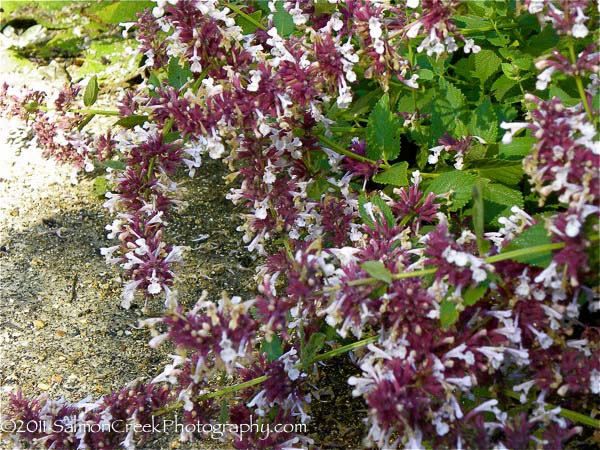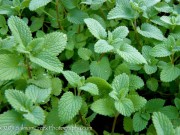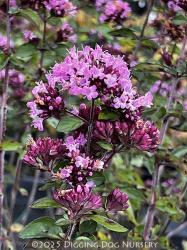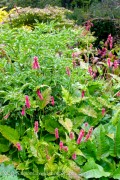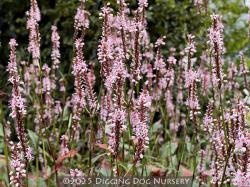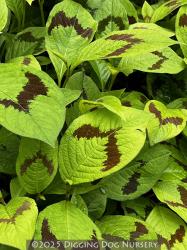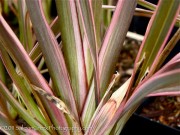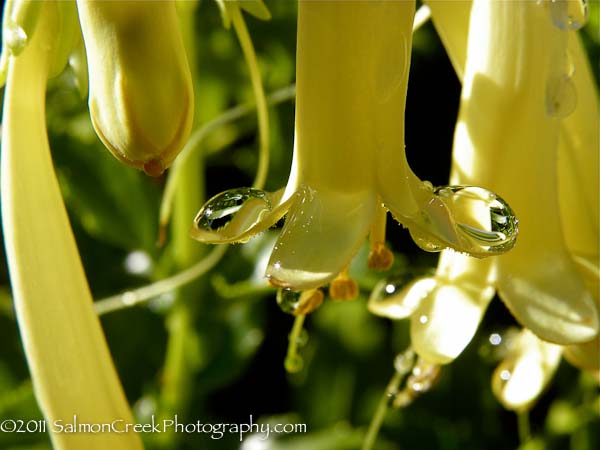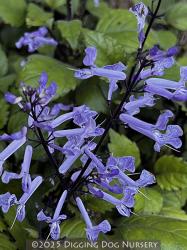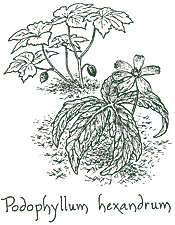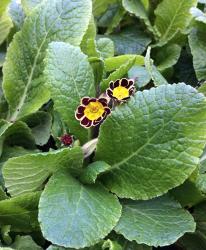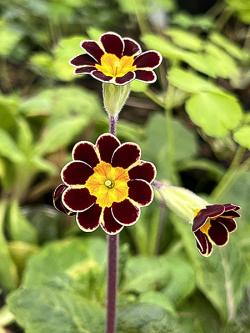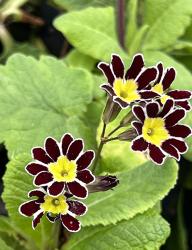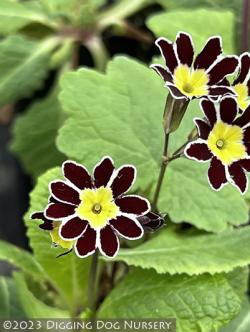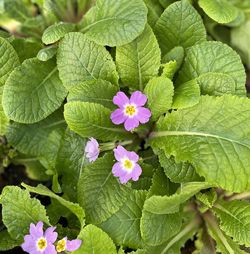Including Oenothera, Omphalodes, Penstemon, Primula, & Persicaria
Nepeta
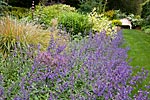
Catmint
Sometime around May a certain fragrance tells us that it’s time for sunny days and warm weather. It’s Nepeta! Catmint, as it is commonly called, is a free bloomer whose billowy mounds of blue-violet, lavender, pink or white flowers are as opulent as its aromatic foliage. Supposedly, this herb renders timid people fierce, and the botanist Tournefort tells of a hangman who couldn’t cut the mustard “until he chewed a little catmint root.” Have some Loosestrife around in case things get out of hand. Cut back in July for an encore in the fall.
Each $11.50
Big, bright blue-violet tubular blooms with extended white-freckled lower lips and smoky-purple calyces bedeck showy 6 in. floral spires. Inheriting the vigor of its yunnanensis parent, yet maintaining a neat compact habit, branched upright stems emerge from underground stolons and sprout attractive notched ash-green leaves. Barely fazed by heat, humidity and sporadic dry periods, ‘Blue Dragon’s long-blooming flowers make a spectacular addition to a summer bouquet.
Blooms June–mid-September
Size: 2-1/2' – 3' 0" high x 2-1/2' wide.
Hardy to zone 6.
Each $11.50
Introduced over 70 years ago by Dr. Skinner, this sterile Canadian hybrid develops a hearty medium-sized habit capable of enduring tough conditions and cold temperatures. The snug, shapely mass of small, scalloped gray-green leaves cushions copious richly colored blue-violet flowers that butterflies and hummingbirds adore. ‘Dropmore’s lavish long-lasting blooms plus soft-looking spicy-scented foliage lend a tranquil touch to walls, staircases and border edges.
Blooms May–September
Size: 15" – 18" high x 18" – 20" wide.
Hardy to zone 3.
Nepeta faassenii ‘Kit Cat’ (P-1388)
Each $11.50
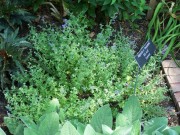
A well-mannered Catmint, ‘Kit Cat’ keeps a tight-set, low-to-the-ground profile. The gray-green clump of pint-sized leaves projects cool tones, especially when small but numerous terminal clusters of lavender-blue flowers unfurl all summer long. Perfect for padding hard edges along steps, walkways or in the rockery, this floriferous Nepeta easily melds with Stachys ‘Silky Fleece’ and Antirrhinum ‘Roseum’.
Blooms May–mid-October
Size: 15" high x 15" wide.
Hardy to zone 5.
Nepeta x faassenii ‘Purrsian Blue’ (P-1994)
Each $11.50
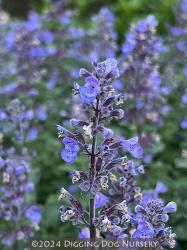
Praised for its myriad periwinkle-blue blooms with smoky-purple calyces and fast growing, low compact habit, this 2013 introduction came about when Kevin Hurd crossed Nepeta ‘Six Hills Giant’ and Nepeta ‘Eldean’. Prim, petite serrated grayish green leaves clothe a spry rounded mound that requires little maintenance and can edge a perennial border, squeeze between stone work or grace an herb garden. (pp#24,788)
Blooms May–September
Size: 18" high x 18" – 2-1/2' wide.
Hardy to zone 3.
David Salmon of High Country Gardens recently selected this long-blooming, tough-as-nails Catmint for its markedly blue flower spikes. Long, tapered gray-green leaves comprise a tidy, low growing mound that is covered with blossoms in late spring, and if trimmed back, bestows a second showing in late summer. Vigorous and drought tolerant, ‘Select Blue’ can be paired with another floriferous perennial, Erigeron ‘Bountiful’ to create a colorful union.
Blooms May–August
Size: 15" high x 18" wide.
Hardy to zone 4.
Nepeta grandiflora ‘Wild Cat’ (P-1530)
OUT OF PRODUCTION AT THIS TIME
Email me when this plant is available
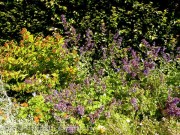
Awarded four stars in the Chicago Botanical Garden’s Nepeta Performance Trials, this exciting new Catmint broadcasts lively purplish red calyxes that can be enjoyed long after its blossoms have faded. The lush sage-green leaves create a vigorous understory for quantities of small, dark blue-violet tubes clustered on good-sized flower heads. Staged midborder, the colorful display spans several months and blends easily with Sedum ‘Hab Gray’, while riding on tall upright stems.
Blooms mid-June – late September.
Size: 3' 0" high x 2' 0" wide.
Hardy to zone 5.
Nepeta grandiflorum ‘Summer Magic’ (P-2103)
Each $11.50
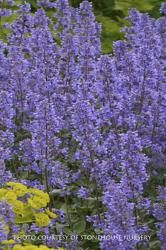
Kudos to Malcom Spencer for this low growing Nepeta that celebrates unwavering prowess, nonflopping erect stems and a floriferous frenzy. Adored by bees, the plump spikes are packed with tiny violet-blue flowers, embellishing trim, closely woven ash-green leaves from summer ’til early fall. Tolerant of heat, humidity and occasional drought, ‘Summer Magic’ casts a cool-hued spell in the rockery, between pavers and along pathways. (pp#27,090)
Blooms May–October
Size: 15" – 18" high x 15" – 18" wide.
Hardy to zone 4.
Nepeta ‘Hill Grounds’ (P-2290)
Each $11.50
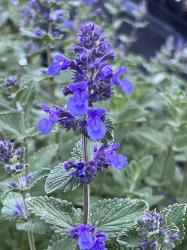
Parading rich violet-blue flowers that are darker than many Catmints, this tailored relatively new cultivar was named for the late Janet Cropley’s Northamptonshire garden where it originated as a chance seedling. The prismatic long-lasting floral display is distinguished by thick, upright terminal spikes, which are studded with whorled tubular blooms above a scented, close-set mound of scalloped, downy gray-green foliage. Recently included in Steve Edney’s top Nepeta recommendations, ′Hill Grounds′s valiant habit tantalizes bees, appreciates lean well-drained soil and looks breathtaking amid Stipa gigantea′s honey-hued inflorescences.
Blooms June–mid-September
Size: 20" – 18" high x 2-1/3' wide.
Hardy to zone 5.
Nepeta x ‘Joanna Reed’ (P-1129)
Each $11.50
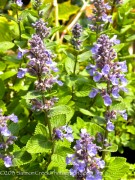
This distinctive, hard-to-find Nepeta originated at Longview Farms, where Joanna Reed’s Pennsylvania garden is located. A naturally occurring cross between Nepeta sibirica and Nepeta faassenii, her upright form bolsters vibrantly colored clusters of tubular flowers. Highlighted by pink throats, the iridescent blue-violet blooms garnish pleasing pewter-green foliage and harmonize with Lobelia tupa.
Blooms late May–September
Size: 3' 0" high x 2' 0" wide.
Hardy to zone 5.
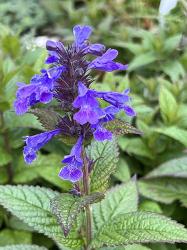
Large bee-friendly blooms coupled with a diminutive shipshape habit give you good reason to invite this new award-winning Concept Plants’ introduction into your garden. Erring more on the blue side, large tubular blue-violet blooms and dark purple calyces adorn the long-lasting, upright spikes above a bushy aromatic base of stout stems cloaked in close-set broad, serrated green leaves. Tailor-made for patio containers and border frontage, nonflopping ‘Neptune’ owes its hearty constitution to its Russian heritage and its good behavior to horticulturist Kees Jan Kraan’s diligence.
Blooms June–September
Size: 8" – 12" high x 8" – 12" wide.
Hardy to zone 5.
OUT OF PRODUCTION AT THIS TIME
Email me when this plant is available
The stately bearing of this tall growing upright Nepeta caught our eye some 25 years ago at a small British nursery located near Great Dixter. Long sturdy panicles of whorled, densely massed rosy lilac flowers crown a lush textural foundation of broad, serrated pewter-green foliage and stout branched stems. Its pastel hues can be teamed with Centaurea macrocephala, Caryopteris incana and Crocosmia ‘Honey Angels’ for a pleasing foliar medley and late season flower-power.
Blooms July–September
Size: 3' 0" – 3-1/2' high x 2' 0" wide.
Hardy to zone 6.
Bathed in restful hues, this seldom-offered Nepeta fashions a softly colored, large mound of good-sized, serrated, gray-green leaves and tall, branching spikes embellished with densely set lilac flowers. Blooming for months, ‘Longipes’ creates a pleasing pastel medley in the company of Papaver spicatum and Euphorbia myrsinites.
Blooms late May–July.
Size: 2' 0" high x 2' 0" – 2-1/2' wide.
Hardy to zone 5.
Nepeta manchuriensis ‘Manchu Blue’ (P-2291)
Each $11.50
Fancied by bees, butterflies and plant enthusiasts, ′Manchu Blue′s imposing long bright purplish blue spires are borne in spectacular profusion above a winsome tall bushy base. The tranquil-looking blooms, each with a magenta-speckled white lip, nestle within decorative inky blue and green calyces, while large ultra-redolent fresh green leaves sport prominent veins plus notched margins. Effective planted in drifts or as an attractive stand-alone, this seldom offered energetic Nepeta can mosey alongside roses, Geranium ‘Sabani Blue’ and Hydrangea serrata ‘Bluebird’.
Blooms May–mid-August
Size: 2-1/2' – 3' 0" high x 18" – 2' 0" wide.
Hardy to zone 5.
OUT OF PRODUCTION AT THIS TIME
Email me when this plant is available
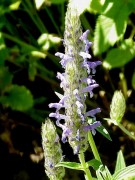
Despite its name, this outstanding Kashmiri native will give you nothing to be nervous about. With an upright and bushy stance, N. nervosa features handsome, deep green foliage that’s veined and somewhat linear in shape, accompanied by large dense clusters of dark blue flowers. Plant at the base of Buddleja crispa, and enjoy the strikingly classic contrast of blue and silver.
Blooms July–August.
Size: 12" – 18" high x 15" wide.
Hardy to zone 5.
Indigenous to northern Greece, Iran, Iraq and Lebanon, this stately Nepeta exhibits unique qualities, casting impressive vertical accents as straight 3 ft. tall branched stems soldier upward. The generous showing of small white flowers illuminates an attractive leafy green bed, shaped by notched, prominently veined good-sized foliage. N. nuda ssp. albiflora can be coupled with Gaura ‘White Heron’ for luminous color echoes as well as intriguing foliar contrast.
Blooms July–September
Size: 3' 0" – 4' 0" high x 2' 0" wide.
Hardy to zone 4.
OUT OF PRODUCTION AT THIS TIME
Email me when this plant is available
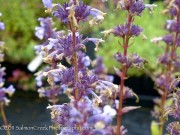
A rather new introduction, Nepeta parnassica is tall growing. Attached to its brawny stems, sizable grayish green leafage lifts itself toward lush spikes of lilac-blue flowers and dark, wine-hued calyxes. This late bloomer’s height puts it midborder, where, backed by the concurrent blooms of Helianthus ‘Lemon Queen’, a late summer pleasure is yours for the viewing.
Blooms July–September.
Size: 4' 0" – 4-1/2' high x 2-1/2' wide.
Hardy to zone 5.
OUT OF PRODUCTION AT THIS TIME
Email me when this plant is available
An upright Englishman standing taller and with less sprawl than N.x ‘Six Hills Giant’, ‘Pool Bank’s gray-green foliage gives way to tall branched spires decorated with bluish lavender blossoms, each nestled in a dusky mulberry-hued calyx. The tempered look of this Nepeta is effective for midborder drifts with Agastache ‘Firebird’ nearby.
Blooms July–September.
Size: 3' 0" high x 2-1/2' wide.
Hardy to zone 4.
Nepeta ‘Psfike (Little Trudy)™’ (P-1529)
Each $11.50
A dogged constitution and compact good looks characterize this Plant Select offering. Flourishing in xeric conditions, the noteworthy ground hugging mound of well-branched stems and serrated dusty silver-green leaves gives way to deep lavender-colored flower spires nearly all season long. Nestle fine textured Little Trudy amid steps, atop a wall or in a low-maintenance planting where she’ll make a composed companion for Oenothera ‘Fyrverkeri’. (PPAF)
Blooms May–September
Size: 8" – 10" high x 12" – 16" wide.
Hardy to zone 4.
Nepeta racemosa ‘Little Titch’ (P-0862)
Each $11.50
‘Little Titch’ has such a small stature that even Nepeta ‘Superba’ is more upright. Its tightly packed ash-green leaves form a dense ground-level mass. Garnishing stem tips, small heads of rich blue-violet flowers faithfully unfurl until the end of summer. ‘Little Titch’ is delightful between rocks or right up front with Achillea ‘Hella Glashoff’ and Diascia ‘Coral Canyon’.
Blooms May–September
Size: 8" – 10" high x 15" wide.
Hardy to zone 5.
Nepeta racemosa ‘Superba’ (P-0659)
Each $11.50
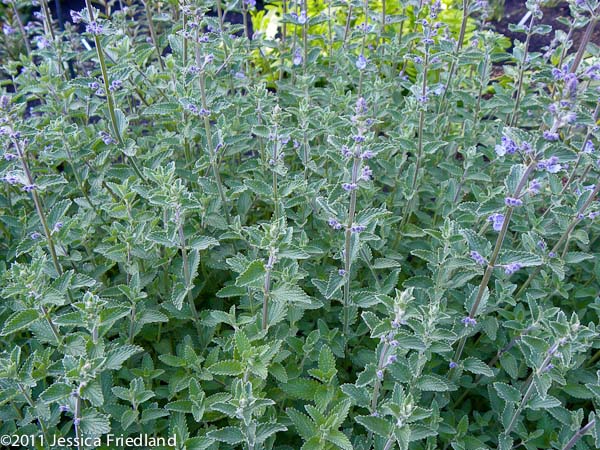
This low mounding Catmint has a clean-cut look that persists throughout the summer, making it excellent for the front of the border. Deep lavender-blue flowers, some of the most vividly colored of the Nepetas we offer, harmonize beautifully with the blooms of Penstemon ‘Sunburst Amethyst’ and Eryngium amethystinum.
Blooms June–September
Size: 18" high x 2' 0" wide.
Hardy to zone 5.
Nepeta reichenbachiana (P-0106)
Each $11.50
This compact Nepeta bears blue flowers with just a hint of violet, and offers verdant foliage. Growing profusely, it forms a thick, low mound with a sumptuous play of color, texture and fragrance.
Blooms April–October.
Size: 12" high x 18" wide.
Hardy to zone 5.
Long after this species has bloomed you will remember its large tubular blue flowers highlighted by intensely aromatic deep green foliage. With an upright stance, ‘Souvenir d’ A. Chaudron’ makes a good companion for Origanum ‘Bristol Cross’ or Euphorbia myrsinites.
Blooms August–September
Size: 18" high x 18" wide.
Hardy to zone 5.
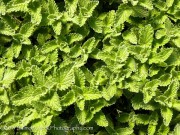
Both upright and billowy, this Nepeta is spectacular in drifts, sporting stems laden with lavender flowers. Its blossoms are held openly above its soft gray-green foliage. An old favorite here, ‘Six Hills Giant’ looks superb backed by Calamagrostis ‘Avalanche’, with its golden seed heads. Pink Geraniums are equally worthy companions.
Blooms April–September.
Size: 2-1/2' high x 3' 0" wide.
Hardy to zone 5.
Each $11.50
A snowy divergence from the blue-violet hues typical of most Nepetas, tiny whorled white flowers blanket the snug tranquil-looking mound of serrated gray-green leaves throughout the summer. This neat undemanding perennial lends luminous pollinator-friendly highlights to a rock wall, cottage garden and right up front in a perennial bed. Intermingle with Dracocephalum ‘Fuji Blue’ and Penstemon ‘Zuriblau’ and a classy vignette is yours for the viewing.
Blooms June–August
Size: 12" – 15" high x 12" – 15" wide.
Zone 4/5.
Indigenous to the mountainous areas of northwest China, this choice rarely offered Nepeta swaggers a lot of garden oomph: spicy fragrance, tall valiant stature and bountiful bicolored blooms that beguile both honey bees and floral designers. Toothed triangular green leaves and sturdy upright stems bolster long branching spires housing whorled clusters of unusual clear blue-purple flowers with dark purple speckles on striking white lips. Happiest in adequately moist, well-drained soil, Nepeta stewartiana is perfect for a cottage garden, formal border or meadow setting.
Blooms June–mid September
Size: 2' 0" – 2-1/2' high x 18" – 2' 0" wide.
Hardy to zone 5.
Nepeta subsessilis ‘Blue Dreams’ (P-1389)
OUT OF PRODUCTION AT THIS TIME
Email me when this plant is available
Broadcasting vibrant blue tones, a profusion of large, loosely arranged plump cylinders house tubular blooms with darker fringed calyxes. Neat, serrated leaves make a handsome cover for the upright clumping stems that flourish in moist soil and dappled shade. Deadheading will keep the flowers coming.
Blooms June–August.
Size: 18" high x 18" – 2' 0" wide.
Hardy to zone 4.
Nepeta subsessilis ‘Cool Cat’ (P-1484)
OUT OF PRODUCTION AT THIS TIME
Email me when this plant is available
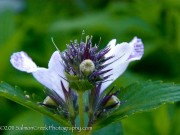
Icy spikes of white-specked lavender-blue flowers to soothe the senses on a hot afternoon are what this new, highly touted Nepeta has to offer. Compact straight-up stems are densely shrouded in dark green serrated leaves, making a tidy aromatic base for the prolific summer long display. Partner with Eryngium ‘Blue Jackpot’ and blue-flowered Anchusa and enjoy the cool-colored vignette.
Blooms June – September.
Size: 2' 0" – 2-1/2' high x 3' 0" wide.
Hardy to zone 4.
While the species resides upon Japan’s sheltered coastal cliffs and the shady rocks along its mountain streams, ‘Sweet Dreams’ will love the bright shadows of your garden. Chubby cylindrical spikes garnished with long, pink-blushed white flowers and burgundy floral bracts render an eye-catching two-toned mecca for butterflies and bees. More acquiescent to shade and damp conditions than most Nepetas, the tidy upright deep green clump of large, lush serrated leaves provides a lovely color echo alongside Persicaria ‘Rosea’ in rich, somewhat moist abodes.
Blooms July–September
Size: 18" high x 2' 0" – 2-1/2' wide.
Hardy to zone 4.
Nepeta subsessilis ‘Washfield’ (P-1706)
OUT OF PRODUCTION AT THIS TIME
Email me when this plant is available
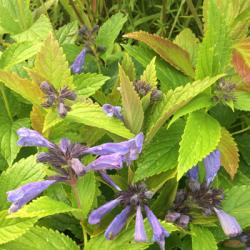
Named for Elizabeth Strangman’s British nursery where it originated, ‘Washfield’ is regarded as the best subsessilis cultivar currently available. Adored by butterflies and bees, well-endowed, erect branching spikes house vibrant clusters of blue-violet tubular flowers, opening from small buds shrouded in dark calyxes. The bushy clump-forming base yields scented green foliage, which offsets gray-leafed plants to great effect and obliges heavier soil more so than most Catmints.
Blooms June – August.
Size: 18" high x 18" – 2' 0" wide.
Hardy to zone 4.
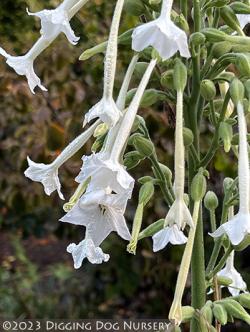
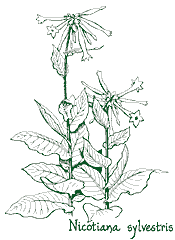
Discovered in Argentina around 1898, this striking ornamental tobacco plant is a perennial in warmer climates and an annual in cooler areas. Large, slightly sticky, bright green oval leaves grow on tall, upright stems, topped with drooping clusters of pendulous, intensely fragrant, long tubular flowers, which flare to five-pointed stars at the end. A dramatic presentation wherever it is planted, we show it off with Salvia ‘Purple Majesty’ and Euphorbia mellifera.
Blooms August–September.
Size: 5' 0" high x 2-1/2' wide.
Hardy to zone 8.
Oenothera
Evening Primrose
A lover of sunny sites, this large genus produces cup shaped, papery, long blooming flowers. Most Oenotheras are indigenous to North America, and are easily grown in well drained soil, even if it’s dry and lean.
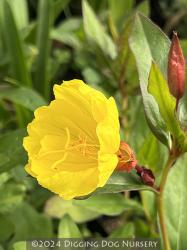
Ornamental orange-red buds, an over-the-top floral display and outstanding cold hardiness earned ‘Fireworks’ a 5-star rating at the Chicago Botanical Garden’s recent Oenothera trail. Single, canary-yellow bowl-shaped blooms appear in scores, embellishing a prismatic foil of bronzy-green lance-like leaves with maroon overtones and compact red-hued stems. Admirable in the cottage garden or tucked among rocks, this highly treasured native Sundrop offers additional enticements when distinctive seed pods appear and burgundy-imbued leaf rosettes warm the winter landscape.
Blooms June–August
Size: 15" – 18" high x 12" – 15" wide.
Hardy to zone 4.
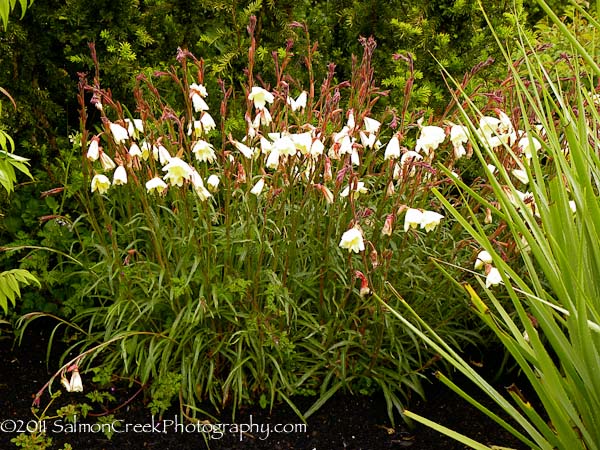
In 1790, this notorious beauty made its way from Patagonia to England in the pockets of a ship’s surgeon. With flowers that are known for opening in perceptible movements at dusk, the Evening Primrose is a temptress that draws gardeners to her side as the sun goes down. The fragrant flowers, which begin as yellow, turn peach, and then shimmery coral-red, and the narrow, linear leaves, all crinkled and wavy-edged, make this plant a spectacular specimen in the rockery or in a more informal native setting.
Blooms May – August.
Size: 2-1/2' high x 2' 0" wide.
Hardy to zone 7.
Omphalodes
Navelwort
A favorite of Marie Antoinette’s, these endearing forget-me-not–like flowers claim their name from the navel-shaped groove that marks each seed. Omphalodes are members of the Borage family, preferring moist soils but tolerant of dry conditions when grown in shade. They can take full sun where summers are temperate and need dappled light elsewhere. Slowly spreading by underground stems, let this lovely and leafy evergreen ground cover enhance the edge of the woods or a rock garden with spring bulbs and Ajuga not far away.
“True Blue” is our claim about Captain Collingwood Ingram’s improvement on this species. Year after year, a generous showing of deep blue flowers adorns 15 in. leafy stems stretching above a tidy mass of green leaves. Larger than the species, these blossoms extend their display by fading to nostalgic violet tones.
Blooms April–June.
Size: 10" high x 15" wide.
Hardy to zone 6.
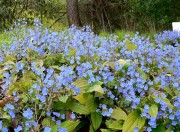
Created by New Zealand’s noted breeder, Terry Hatch, ‘Joy Skies’ has wonderfully elegant and loose mounds of long, lancelike leaves arching gracefully downward. The charming open-faced flowers borne along trailing stems echo the intense azure of the summer sky. Star-shaped, light green calyxes add a colorful shimmer.
In our garden, we’ve backed it with the sunny sparkle of Hypericum kouytchense and the eye catching foliage of Spiraea ‘Ogon’.
Blooms April–July.
Size: 12" high x 12" wide.
Hardy to zone 6.
And you thought you had to travel all the way to France to enjoy a Parisian sky! Enchanting, just like the cultivar name suggests, this Omphalodes hosts a profusion of blooms in luminous bleu d’azur hues above a leafy base of foliage. Bring European appeal to your woodland trail and try ‘Parisian Skies’ en masse with Pulmonaria ‘Excalibur’ nearby.
Blooms April–June.
Size: 10" high x 15" wide.
Hardy to zone 6.
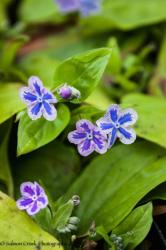
This stellar old favorite displays plentiful airy sprays of fetching Mediterranean blue flowers defined by illuminated white eyes and five spaced round-edged petals, each one with a deep blue interior and a pink rim that eventually matures to white. The dainty bicolored blooms sparkle above long-petioled, dark green leaves shaping an attractive bushy hummock. Irresistible when massed, ‘Starry Eyes’ can enchant the rockery, a shady planting or the woodland garden. A member of the Borage family, Omphalodes prefers moist soil, but will tolerate dry conditions when grown in shade.
Blooms April–June.
Size: 10" high x 12" wide.
Hardy to zone 6.
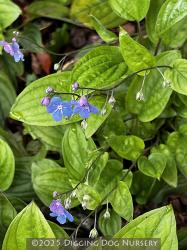
Hailing from central and southeastern Europe, this tidy Omphalodes fashions an adaptable energetic carpet characterized by pointed, prominently veined and long-petioled rich green leaves. Clusters of petite, white-eyed brilliant blue flowers make an enchanting appearance that heralds spring atop short wiry stems. Happiest in cool lightly shaded alcoves with adequate moisture and good drainage, Omphalodes verna’s undemanding semi-evergreen habit slowly spreads, tolerates occasional dry shade once established and imparts serene cerulean accents to borders, understory shrub plantings and woodland gardens.
Blooms mid March–June
Size: 9" high x 12" wide.
Hardy to zone 6.
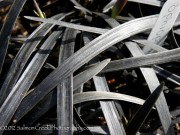
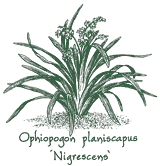
Licorice-black, ¼ in. wide, spidery blades, delicate, bell-shaped purplish white flowers on dark spikes, and shiny bluish black fruit are all good reasons to invite this versatile perennial into your garden. The ebony-colored evergreen tufts with newly emerging green leaves can be dramatically juxtaposed against golden Carex elata ‘Aurea’ or Athyrium niponicum pictum’s silver flushed fronds. Nestled in between rocks, along pathways, near water or en masse as an easy going ground cover, Black Mondo Grass competes well with other plant roots, and favors well drained soil, periodic trimming and filtered sun.
Blooms July – August.
Size: 6" high x 8" wide.
Hardy to zone 6.
Origanum
Oregano
The Greeks called this ancient Mediterranean herb oros ganos, meaning “joy of the mountain,” and legend has it that Aphrodite created the sweet spicy scent of its leaves as a symbol of happiness. Preferring sharp-draining soil and a sunny spot, Origanums display small, whorled tubular flowers often arranged in showy overlapping bracts.
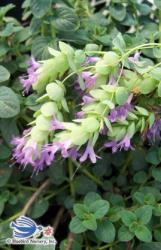
Esteemed plantsman and Bluebird Nursery owner Harlan Hamernik selected this Origanum for its exceptional floral detail. Aromatic, glaucous green-gray leaves compile a shapely drought-resistant bed that unleashes large pendent sprays distinguished by layered chartreuse bracts and small, protruding vivid amethyst flowers. Delivering an unparalleled, several month showing, ‘Amethyst Falls’ can be staged in a container or an easily viewed site with a sunny southwestern exposure and quick-draining soil, while the extravagant quantities of rotund cone-like blooms can be left on to promote winter hardiness. (PPAF)
Blooms August–October
Size: 15" high x 18" wide.
Hardy to zone 5.
Origanum ‘Bristol Cross’ (P-1277)
Each $10.75
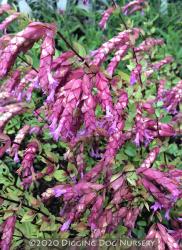
Reminiscent of decorative braids, slim blooms emphasize small deep rose and chartreuse bracts and assume a refined aspect. Tipped with tiny purple flowers, clustered bracts are held at nearly right angles to upright and leafy reddish stems. This long lasting, delicate floral presentation is grounded by medium green foliage, and casts earthy yet saturated hues in the border or a bouquet.
Blooms August–October
Size: 6" – 8" high x 18" wide.
Hardy to zone 6.
Origanum ‘Kent Beauty’ (P-1080)
Each $10.75
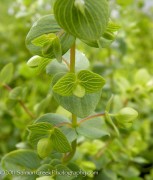
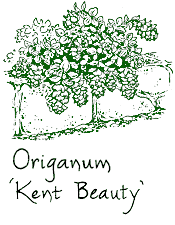
Though Elizabeth Strangman’s attractive hybrid looks quite dainty, it actually appreciates hot dry conditions. If this isn’t enough to recommend it, ‘Kent Beauty’ produces a plethora of plump rosy bracts—some 2 to 3 in. long—that resemble Hops and are prized by those who love dried arrangements. Rounded and paired, the inch-long, blue-green leaves clasp trailing, thin wine-tinted stems. A natural atop a stone wall, this compact Origanum’s nodding blooms and intriguing foliage make a splendid statement.
Blooms August–October
Size: 12" high x 12" wide.
Hardy to zone 6.
Each $10.75
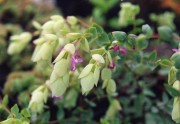
Decorated by small rose-pink flowers, droves of stacked, overlapping pale green and blush-colored bracts look like slender papery ornaments. Superb in dried bouquets, these large fanciful blooms hang from the tips of long, wiry, arching stems, loosely lined with smooth, nearly round green leaves. A little more upright and more open than ‘Kent Beauty’, this captivating Origanum deserves a spot where it can be easily cherished.
Blooms August–October
Size: 12" high x 18" wide.
Hardy to zone 6.
Origanum ‘Lizzie’s Hybrid #2’ (P-1619)
OUT OF PRODUCTION AT THIS TIME
Email me when this plant is available
Legions of compact Hop-styled dusky rose-colored bracts—festooned by tiny pink flowers and ideal for drying—reside at the ends of narrow pendulous stems. Exhibiting opposite, rounded green leaves and a form that is similar to Origanum ‘Santa Cruz’, but is smaller statured and not as spreading, this adorable Origanum comes to us from Oregon’s Goodwin Creek Gardens.
Blooms July – September.
Size: 12" high x 12" – 15" wide.
Hardy to zone 7.
Origanum ‘Rosenkuppel’ (P-1463)
Each $10.75
Firm violet-tinged leafy stems elevate tightknit clustered maroon buds plus large, long-blooming rose-pink flowers with rich purple calyces. Slowly spreading by shallow rhizomes, the winsome rounded evergreen leaves entertain tiny silver hairs, and plum-colored accents once the weather cools. A sure-to-please Dutch selection, this Origanum’s spicy-scented foliage makes an undemanding deep green foil for the ornamental blooms that befriend bees and butterflies.
Blooms August–October
Size: 15" – 18" high x 18" wide.
Zone 5/6.
Origanum ‘Santa Cruz’ (P-0709)
Each $10.75
Antique-toned, dusty rose-colored, Hop-like flowers, much larger than those of ‘Ed Carmen’, are offset by bright green calyxes and pile up all summer on branched red stems. For a pleasing fusion of color, try it with Penstemon ‘Blackbird’ and Muhlenbergia capillaris.
Blooms July–September
Size: 15" – 20" high x 3' 0" wide.
Hardy to zone 5.
Origanum ‘Virginia Saso’ (P-2104)
Each $10.75
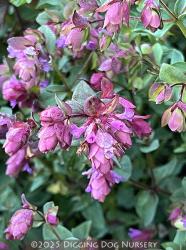
Discovered amid several Origanum ‘Kent Beauty’ seedlings in the namesake’s famed Saratoga, California garden, ‘Virginia Saso’s endearing pastel-hued blooms afford a longer lasting, more abundant floral show than the seed parent. Ample pink bracts, which darken as they age, plus petite pale rose flowers comprise the chubby, pendent hop-like heads. Developing a resilient, low mat-forming habit, its rounded, slightly fuzzy bluish green leaves can ramble between steps, traipse along paths, spill over walls or even grace a hanging basket.
Blooms July–September
Size: 6" – 9" high x 8" – 12" wide.
Hardy to zone 6.
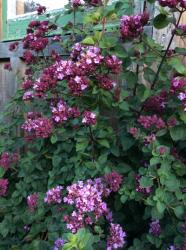
We collected this exceptionally floriferous form of vulgare at Ed Carmen’s nursery and named it in his honor. Multitudes of deep pink blooms and striking, dark purple bracts are held atop sinuous, leafy flower stems some 2-½ ft. above the bluish green mound of basal foliage. To create a harmonious melding of purple and blue, let it sprawl beside a path with Nepeta ‘Walker’s Low’, Euphorbia ‘Dean’s Hybrid’ and Aster ‘Bill’s Big Blue’.
Blooms August–October.
Size: 2-1/2' – 3' 0" high x 3' 0" wide.
Hardy to zone 5.
Each $13.00
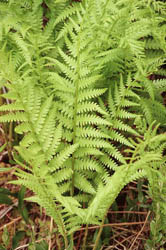
Celebrated as one of our choicest natives, the deciduous Cinnamon Fern is steeped in grandeur and calls every state east of the Mississippi its home. Urbane vase-shaped clumps spotlight gracefully arching lacy bright green fronds plus an extraordinary central showing of erect fertile cinnamon-hued spikes. Known to be a tasty meal for ruffled grouse and nest material for hum- mingbirds, Osmunda cinnamomea favors moist shady sites, handles more sun in cooler locales and looks best en masse.
Size: 3' 0" high x 3' 0" wide.
Hardy to zone 3.
Osmunda regalis ‘Purpurascens’ (F-0032)
Each $13.50
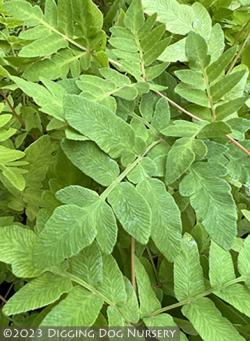
Though the genus could exalt a Scandinavian rune writer of 1025, or the Saxon’s name for the god Thor, the specific epithet aptly denotes Royal Fern’s majestic presence. Kin to the Eurasian and North American native, this robust AGM-winning cultivar headlines a grand three-season performance. New reddish purple spring growth looks a bit like sweet-pea foliage, and as the weather warms, the shapely deciduous flourish of broad fronds features stout upright maroon stems plus large, well-separated bright green leaflets, which support unique spore-laden flower-like tassels for midsummer intrigue and transmute cozy gold and russet colors for fall. ‘Purpurascens’s non-finicky, bold textured demeanor can be ensconced in shady, consistently-moist woodland gardens, and prairie or native plantings plus pond and streamside venues.
Size: 2' 0" – 4' 0" high x 2' 0" – 4' 0" wide.
Hardy to zone 4.
Papaver
Poppy
Wielded by man since prehistoric times, Poppies have long been associated with sleep and oblivion, and after the First World War, the Flower of Forgetfulness ironically evolved into a symbol for remembrance. Generally defined by nodding buds, ornamental seed heads and solitary fleeting flowers gracing long stems, these sun lovers appreciate a well-drained, somewhat dry position, good air circulation, a hard cut after blooming and a winter chill. Plant in mass for best effect.
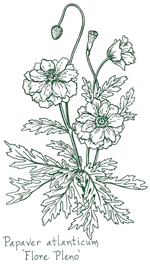
Once you witness the sheer crepe paper-thin orange blooms nodding on tall lanky stems above a bluish green rosette, you’ll see why its common name is so apropos. An applauded brilliantly colored perennial at Chanticleer’s famed ‘ruin and gravel garden,’ Orange Feathers resists deer, tolerates drought, loves good drainage plus makes a self-sowing carefree addition to a cottage garden, rockery, stone wall or even a cut arrangement.
Blooms June–August
Size: 18" – 2' 0" high x 15" wide.
Hardy to zone 5.
While the cultivar name is a classical musical term, referring to fast-paced or brisk movements, ‘Allegro’ equally arouses our senses with 4 to 6 in. silky, brilliant orange-red petals dancing around a textural cluster of dark purple stamens. Charcoal-hued basal smudges further enhance the large cup-shaped flowers that are shouldered on compact sturdy stalks clad in pinnately cut, serrated gray-green leaves. Incite a riot of color and plant this lavish Poppy near Dahlia ‘Bishop of Oxford’.
Blooms June
Size: 2' 0" high x 18" – 18" wide.
Hardy to zone 3.
For the adventuresome gardener and not the faint-at-heart, this flamboyant beauty seduces us with her gorgeous oxblood-red flowers. Engraved by an ebony swath at each base, the overlapping, crepe-paper-like petals gather around velvety jet-black centers, while lounging on tall steadfast stems. A bushy bluish green bed of pinnately lobed, toothed and hairy foliage becomes a restful counterpoint to the large hot-headed blooms.
Blooms June
Size: 2-1/2' high x 20" wide.
Hardy to zone 3.
Papaver orientale ‘Forncett Summer’ (P-2240)
OUT OF PRODUCTION AT THIS TIME
Email me when this plant is available
A blousy beauty from Norfolk, England, ‘Forncett Summer’ models well-endowed vivid salmon-pink blooms, embellished with dark knobby centers plus ebony daubs at the base of each parchment-thin petal. The shimmering ultrafringed flowers reside above a robust foundation of lanky slender stems wrapped in hairy deeply-divided gray-green leaves. Well suited for rockeries, cottage gardens and mixed borders, this long-lived upright perennial makes a stunning statement amid Salvia ‘Tanzerin’ and Allium ‘Gladiator’.
Blooms June
Size: 2-1/2' – 3' 0" high x 18" – 2' 0" wide.
Hardy to zone 3.
The successful outcome of Elinor de Konig’s Dutch breeding program, this relatively new Papaver proclaims 2 distinctive attributes: late summer repeat bloom and a more heat-resistant foundation. The huge rosy burgundy-hued flowers are described by voluptuous layers of dark ruffled petals plus raven-black button-like centers. Lounging on strong stems and blue-green leaves that don’t sulk when summer arrives, the upturned papery blooms can be combined with Monarda ‘Jacob Cline’ for a tantalizing duo.
Blooms June & August
Size: 2-1/2' – 3' 0" high x 18" – 2' 0" wide.
Hardy to zone 3.
Papaver orientale ‘Marlene’ (P-1663)
OUT OF PRODUCTION AT THIS TIME
Email me when this plant is available
Lending a decidedly feminine flair to any herbaceous planting, ‘Marlene’ parades layered chiffonlike petals imbued with a sumptuous shade that falls nearly midway between red and purple. Frilly pitch-dark centers and prominent inked markings at the base of each petal heighten the glamour as sturdy upright stems and blue-green feathered leaves provide a cool-hued contrast.
Blooms June.
Size: 2-1/2' high x 20" wide.
Hardy to zone 3.
Famed British nurseryman Amos Perry is credited for starting the Poppy craze in 1906 when he plucked this deeply cupped salmon-pink seedling from a bed of red-blooming poppies. Swirling around knobby coal-black centers, immense, rumpled silky petals are dabbed with midnight-purple bases. ‘Mrs. Perry’s delicate floral gorgeousness crowns straight lanky stems and light green ferny foliage.
Blooms June
Size: 2-1/2' high x 20" wide.
Hardy to zone 3.
Initially discovered as a chance seedling on the compost pile at Patricia Marrow’s Somerset nursery, this sensational Papaver is coveted for its huge, uniquely colored plum-wine flowers. The elegant 5 to 6 in. wide blooms showcase dark black splotches at the base of each papery petal and a blackberry-hued ring, which encompasses an ornate gold and maroon knobby boss. Splashing saturated color across the summer border or in a vase, the lavish display is supported by serrated grayish green leaves.
Blooms June
Size: 2-1/2' high x 20" wide.
Hardy to zone 3.
Springing forth from pendant silver-dappled buds atop staunch stems, the perfect-for-cutting double blooms showcase luscious layered petals painted in tangerine-orange shades gathered around a knob-like black center. ‘May Queen’s chock-a-block floral fanfare, which is one of the earliest to appear, plus finely dissected mound of attractive bluish green leaves make a show-stopping spectacle in the rockery, a container, cottage garden or mixed planting. Sunshine and sharp drainage ensure her energetic splendor.
Blooms May–June
Size: 2-1/2' high x 16" wide.
Hardy to zone 3.
With an Armenian heritage dating to the 17th century, this “princess” hosts magnificent ample-sized flowers. Crumpled petals in pretty salmon-pink colors are accented by pronounced black patches at their bases. The handsome blue-green clump of hairy deeply cut foliage and long, slightly relaxed stems presents a dazzling display, while big fuzzy buds and bold seed heads add intrigue.
Blooms June
Size: 2' 0" – 2-1/4' high x 15" – 18" wide.
Hardy to zone 3.
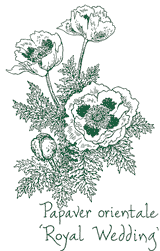
In a tribute to its name, the extravagant, deeply cupped flowers flaunt satiny white silken-thin petals waltzing around a plush purple-black brocaded center. All this floral finery dresses a bluish green pedestal of fuzzy fernlike leaves that grows weary during the summer but bounces back for a pleasing winter presence.
Blooms June.
Size: 2-1/2' high x 20" wide.
Hardy to zone 3.
Papaver orientale ‘Snow Goose’ (P-2052)
OUT OF PRODUCTION AT THIS TIME
Email me when this plant is available
Raised by the British National Collection guardian, Sandy Worth, this extravagant cultivar parades sheer, goffered white flowers with central dark purple blotches plus bold velvety mauve and black centers. The large swank blooms, distinguished by the softest blush of pink, glide above a fern-like gray-green foundation. Spotlight en masse in cottage gardens or perennial borders and relish the luminous early summer lift.
Blooms June
Size: 2-1/2' – 3' 0" high x 18" – 2' 0" wide.
Hardy to zone 3.
Papaver orientale ‘Turkenlouis’ (P-1664)
OUT OF PRODUCTION AT THIS TIME
Email me when this plant is available
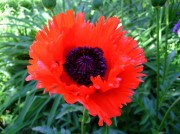
Dressed to the nines, ‘Turkenlouis’ puts on the Ritz with a lusty abundance of 4 to 6 in. wide, fiery red flowers. Dark purple stamens embroider a pronounced raven-hued center that clutches gossamerlike, deeply fringed petals. Modeled above thick strong stems and smoky green leaves, the high-fashion blooms guarantee a loyal summertime following.
Blooms June.
Size: 2-1/2' high x 20" wide.
Hardy to zone 3.
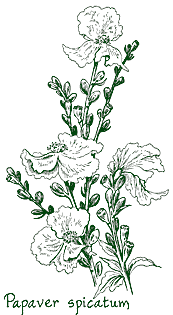
The English use the word “blowsy” to describe its billowy, cloudlike presence; we think it apt. Quick to establish itself in well drained soils, this Poppy’s sheer, papery blossoms have a soft, creamy apricot coloring. Prominent rounded buds, dentate leaves and the plentiful stand of flowering stems are heavily felted in gray. When planted with silvery Stachys, a soft pastel palette is achieved that welcomes the lilac hues of Nepeta ‘Longipes’.
Blooms June–July.
Size: 18" – 2' 0" high x 2' 0" wide.
Hardy to zone 6.
Each $13.00
This charming, New Zealand evergreen subshrub is ideal for intimate garden spaces, filling in and blending with many other types of plants. In early summer, the tidy fine textured mound of thin wine-colored branches and tiny, dark green glossy leaves is completely whitened by spires of delicate blossoms, each centered with a pink-ringed chartreuse eye.
Blooms June–August
Size: 12" high x 2' 0" wide.
Hardy to zone 7.
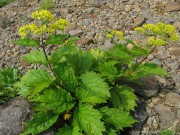
An easy-going dwarf Patrinia, this compact Japanese denizen serves a generous helping of cheery petite yellow flowers all summer long. The bright blooms are held in loose clusters, staged well above pinnately cut broad toothed leaves that shape a tidy rounded deep green clump. Undaunted by hot humid weather and appreciative of rich moderately moist soil, P. gibbosa is a showy contender for mixed borders or cottage gardens, where it keeps our interest sparked with late season chartreuse flower bracts.
Blooms June–August.
Size: 12" – 18" high x 9" – 12" wide.
Hardy to zone 6.
Patrinia scabiosifolia (P-0546)
Each $11.00
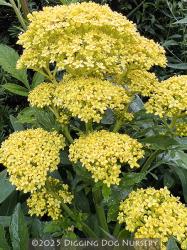
This Korean native is long and slender, like a camel’s neck. Its basal mound of coarse green leaves gives way to thin, branching stems, which hold fragrant sprays of tiny, golden yellow flowers that are great for cutting. The leaves display reddish tints in autumn.
Blooms July–September.
Size: 4' 0" – 4-1/2' high x 2' 0" wide.
Hardy to zone 5.
Penstemon
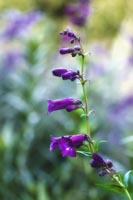
Beard Tongue
Among the most exuberantly blooming plants this side of the Mississippi, Penstemon are part of the enchantment of the West. A member of the Snapdragon family, even cultivated varieties retain a natural air, with dainty, long trumpet flowers and 5 (pent) prominent stamens. Sturdy and easily maintained, species usually range from 1 to 3 ft. tall, and vary in color from white to pink to purple to deep wine red to blue—one for every sunny spot. Trim after the first bloom to encourage a repeat flowering, and cut back in autumn for strong growth next season.
Penstemon ‘Alice Hindley’ (P-0113)
Each $11.75
This energetic, upright Penstemon will enhance your garden with slender, white-throated lavender flowers and unusually glossy foliage. A little taller than many of the Penstemons we offer, it’s best suited for the middle of the border. We like it with Agastache ‘Purple Haze’.
Blooms July–November
Size: 3' 0" high x 2' 0" wide.
Hardy to zone 6.
Penstemon ‘Bev Jensen’ (P-0224)
Each $11.75
‘Bev Jensen’ promises a flirty summer show. Dressed with prominent burgundy scallops on the lower lips and dark magenta-streaked white throats, her cerise-colored flowers are big and surprisingly broad. Sturdy straight-backed stems and large, good-looking jade green leaves bolster the bodacious blooms that last ‘till frost –even more reason to welcome her into your garden bed.
Blooms July–October.
Size: 2-1/2' high x 18" – 2' 0" wide.
Hardy to zone 7.
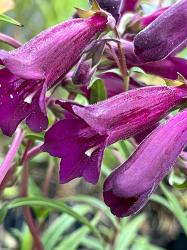
Posh, slender and seductive, ‘Blackbird’s moody dark raspberry-colored tubular flowers hang amidst handsome shiny green leaves well into autumn, presenting velvet-rich accents against the frosted foliage of Lavandula ‘Richard Gray’.
Blooms June–October
Size: 2-1/2' high x 2' 0" wide.
Hardy to zone 6.
Penstemon ‘Blue Midnight’ (P-1297)
Each $11.75
A tall-standing, bushy Penstemon strictus and Penstemon gloxinioides hybrid that’s full of vigor, ‘Blue Midnight’ entices us with its plushly painted blooms. Ample-sized tubular flowers in deep bluish purple hues display violet-infused, flared petals and white throats darkened by burgundy streaks.
Broad and deep green, the courtly foliage offers a composed foil for the profuse, long-lasting blossoms, while the upper stems transmute red-orange autumnal highlights, extending the colorful show.
Blooms June–October.
Size: 2-1/2' high x 3' 0" wide.
Zone 6/7.
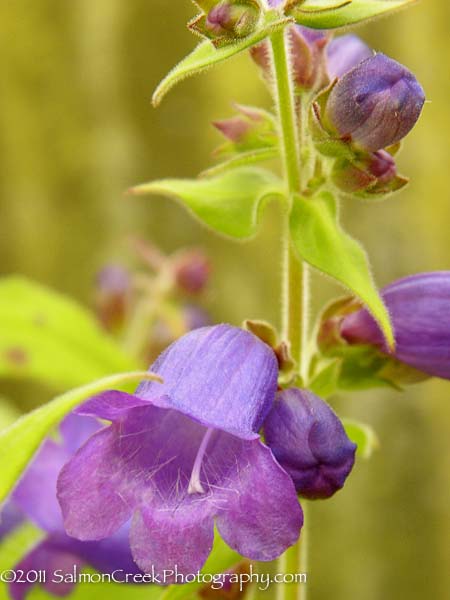
Standing head and shoulders above the rest of our Penstemon offerings, this statuesque selection sends strong straight stalks soaring to a height of 5 feet topped with long blooming dusty purple flowers. The plump blossoms are highlighted by lighter throats and are borne in the leaf axils along impressive 10 in. bloom spikes, while good-sized opposite foliage–apple green, triangular and somewhat sticky–boldly wraps the tall stems. Drawn to this striking Penstemon some 20 years ago at the U.C. Davis Arboretum, we still applaud its singular beauty and stalwart drought tolerance.
Blooms July?October.
Size: 5' 0" high x 2' 0" wide.
Zone 7b/8.
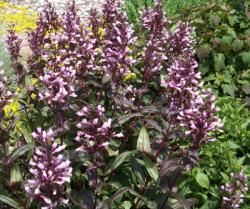
Well-respected Penstemon breeder Dale Lindgren of the University of Nebraska originally bred ‘Husker’s Red’ and now he brings us ‘Dark Towers’, a remarkable Penstemon ‘Husker’s Red’ and Penstemon ‘Prairie Splendor’ prodigy. A vast improvement over his initial introduction, this resolute hummingbird hero delivers darker lance-shaped, plush burgundy foliage and rigid deep purple stems plus regal upright towers, which are openly arranged with abundant tubular pink flowers. The ultrahardy low-maintenance clump can be added to borders, cottage gardens or informal settings, maintaining its opulent coloration during warm summer weather, but pouting in poorly drained soil. (PP#20,013)
Blooms May–June
Size: 2' 0" – 3' 0" high x 12" – 2' 0" wide.
Hardy to zone 3.
Penstemon ‘Elizabeth Cozzens’’ (P-1535)
Each $11.75
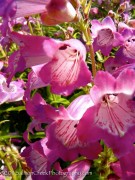
‘Elizabeth Cozzens’s fetching display begins with a slew of porcelain-colored buds crowding tall spires. Taking on lavender shades just before they open, the dainty lilac-pink blooms reveal feisty, dark fuchsia-streaked white interiors above tapered, glossy grass-green leaves. Its easy-to-blend pastel flowers look lovely midborder alongside Salvia ‘Caradonna’.
Blooms June – October.
Size: 2' 0" – 2-1/2' high x 18" – 2' 0" wide.
Hardy to zone 7.
Each $11.75
Maroon-dappled white throats embellish a copious showing of large rosy purple blossoms, emphasizing a vivid coloration, that’s not too dark and tips that aren’t so widely flared. With long and lustrous, deep green tapered leaves and red-infused stems, Enor’s well-branched upright frame makes an urbane statement in a mixed planting, and looks especially upbeat when positioned near cool blooming perennials like Agastache ‘Black Adder’ and Veronicastrum ‘Lavendelturm’.
Blooms June – September.
Size: 2' 0" – 3' 0" high x 2' 0" wide.
Hardy to zone 7.
Arising in Switzerland when Paul Schoenholzer crossed Penstemon ‘Garnet’ and Penstemon ‘Southgate Gem’ in 1939, the ample, hummingbird-friendly bell-shaped flowers are bright red, heightened by a fiery touch of scarlet plus pink-lined white throats. This shrubby AGM winner was bred for longevity, sprouting tall durable stems, refined semievergreen foliage and a somewhat lax, yet mighty manner. ‘Firebird’ promises summer pizazz when partnered with Sporobolus heterolepis ‘Morning Mist’.
Blooms June–September
Size: 3' 0" high x 2' 0" wide.
Hardy to zone 6.
Each $11.75
A 1918 German introduction that was distributed world-wide by Dutch nurseries and later renamed by famed horticulturist Graham Stuart Thomas, this lovely semievergreen hybrid boasts gem-inspired colors coupled with superb winter hardiness. Garbed in narrow lance-shaped greenery, the handsome, well-branched clump hosts a slew of long-lasting garnet-red tubular blooms, sporting snazzy red-striped white throats, on slender burgundy-infused stems. Ideal for borders, butterfly plantings or cottage gardens, ‘Garnet’s vigorous medium-sized stance appreciates good drainage and can be planted amid Lavandula ‘Super Blue’ and Teucrium fruticans (select form).
Blooms July–October
Size: 2' 0" high x 2' 0" wide.
Hardy to zone 7.
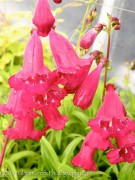
Heralding summer with ample-sized wide-open trumpets, this lush looking Penstemon dresses the border in bright, yet deep shades of cherry-red. Long, somewhat broad, rich green leaves bolster the dazzling flowers, whose maroon and ivory throats appear especially luminous when backed by the late afternoon sun.
Blooms June – October.
Size: 2-1/2' high x 2' 0" wide.
Hardy to zone 7.
Penstemon ‘Ghent Purple’ (P-0206)
Each $11.75
Diminutive narrow glossy green leaves with serrated margins define a well-groomed mounding foundation that looks healthy all season beneath a color-rich display of plum-colored flowers. Opening broadly to reveal striking purple striped white throats, the generously produced 1 in. blooms may be a tad smaller than some Penstemon cultivars, but they reward you with continuous blossoms when cut back midsummer. ‘Ghent Purples’s shorter stature can enhance the front of a bed, top a retaining wall or edge a path.
Blooms July–October
Size: 18" high x 2' 0" – 2-1/2' wide.
Hardy to zone 7.
Penstemon ‘Gilchrist’ (P-1811)
Each $11.75
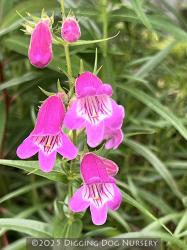
'Gilchrist's bright rosy pink trumpets burst forth in abundance, numbering some 18 to 25 per stem. Soft pink lips plus light nearly white throats with winetinted striations distinguish the splendid long blooming somewhat diminutive flowers, while a glossy finish energizes the compact shapely foundation of trim narrow green leaves. For a winning summer-fest, this undemanding floriferous Penstemon can accompany Salvia 'Twilight Serenade' and Sidalcea 'Elsie Heugh'.
Blooms June–September.
Size: 2' 0" high x 2-1/2' wide.
Hardy to zone 7.
Penstemon gloxinioides ‘White Bedder’ (P-0769)
Each $11.75
This tidy turn-of-the century Penstemon has an array of cultivar names that range from ‘Swan Lake’ to ‘Snow Storm’ and ‘Snowflake’, all aptly conjuring the lovely droves of densely clustered white blooms. Distinguished by a bashful touch of pink on the petal backs and striking dark anthers, the pearly 1 in. flowers unfurl from creamy buds with pink-blushed tips. ‘White Bedder’s strong stems and slender shiny green leaves forge a sturdy upright habit that can take a seat among Salvia ‘Sensation Deep Rose’ and Sedum ‘Septemberglut’.
Blooms July–October
Size: 2' 0" high x 2-1/2' wide.
Hardy to zone 7.
Prized by bees, butterflies and hummingbirds, this long-lived drought-busting California native debuts slender iridescent blue blooms embellished with pink splashes and wide flared mouths. Glossy, slim bluish-green leaves distinguish a snug, mostly evergreen clump, which bolsters the spectacular display of profuse tubular blossoms on dense upright spires. Tailor-made for fast-draining perennial borders, Mediterranean plantings, cottage gardens, coastal landscapes, sun-soaked rockeries and containers, easy-going ‘Blue Springs’ keeps deer at bay, looks especially luminous in sweeps and appreciates periodic deadheading plus moderate summer water as well as lean soil.
Blooms June–August
Size: 12" – 18" high x 12" – 18" wide.
Hardy to zone 6.
Colored with many shades of blue, this handsome, bushy Penstemon offers soothing tones. Topping the narrow, bluish green foliage and red-hued stems, short, showy spikes bear a profusion of slim, bright blue tubular flowers, which look exquisite against silver-leafed Veronica ‘Silbersee’.
Blooms June–August.
Size: 20" high x 18" wide.
Hardy to zone 5.
Penstemon ‘Hidcote Pink’ (P-0112)
Each $11.75
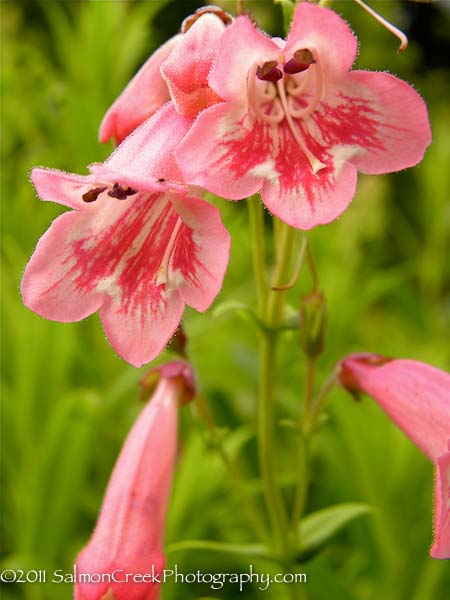
This Penstemon is turning a lot of heads. Rich, yet soft salmon-pink flowers with white throats embellish commanding spikes all summer. ‘Hidcote Pink’ is an ideal midborder choice for blending the forms and colors of other plants. Back it with Buddleia crispa and front with Geranium ‘Sirak’.
Blooms June–October
Size: 2' 0" high x 2' 0" wide.
Hardy to zone 6.
Penstemon ‘King George V’ (P-1476)
Each $11.75
Spikes of large, bright scarlet-red tubular blooms are heightened by maroon-streaked white throats. Holding court above a medium green bushy base with narrow and glossy, tailored foliage, the salsa spiced flowers play out an enticing juxtaposition.
Blooms June – September.
Size: 20" high x 18" wide.
Hardy to zone 7.
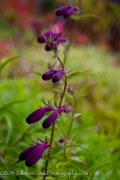
A graceful Bruce Meyers selection, this cross originated between wild Mexican and American Penstemons. The flowers appear in droves with as many as 20 to 30 per stem, and are slightly smaller than the more common varieties. With rich violet-purple petals and a white throat, each bloom is a lovely point of color in our native garden.
One of our most cold-hardy Pentstemons, ‘Pike’s Peak Purple’ will also tolerate a wide range of soil moisture.
Blooms late July–early November.
Size: 2' 0" – 3' 0" high x 2' 0" – 3' 0" wide.
Hardy to zone 5.
Treasured by butterflies, hummingbirds and gardeners, this valiant Plants Select introduction originated as a Penstemon ‘Red Rocks’ sport at Welby Gardens in Denver, CO. Adopting a somewhat iridescent quality, myriad long-blooming lavender-blue flowers don bright white throats with prominent reddish violet veins above an attractive shiny green mound of slender lance-shaped leaves. ‘Psmyers’s tidy and tenacious semievergreen habit enjoys moderate water, handles some shade and readily adapts to xeric conditions once established.
Blooms June–September
Size: 18" – 2' 0" high x 14" – 18" wide.
Zone 4b.
Penstemon x mexicali ‘Red Rocks’ (P-0664)
Each $11.75
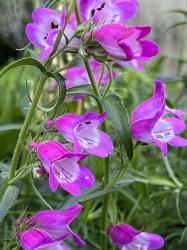
Another versatile Bruce Meyers selection, ‘Red Rocks’ forms the same pleasing vase shape as ‘Pike’s Peak Purple’, and like that cultivar, is nearly evergreen. The bright cherry-pink flowers are white-throated and lend a cheerful look to our border well into fall.
Blooms late July–early November
Size: 3' 0" – 4' 0" high x 3' 0" wide.
Hardy to zone 5.
Beckoning gardeners, butterflies and hummingbirds, deep pinkish violet blossoms with magenta-streaked white throats open nonstop from midsummer through autumn. The abundant tubular-shaped blooms populate prismatic upright spires bolstered by a dense lustrous footing of pointed, slender green leaves. Ideal for cut arrangements and colder regions, ‘Sunburst Amethyst’ requires minimal care, endures dry conditions and works well in the rockery, a favored container or near a border’s front lines.
Blooms late July–October
Size: 20" high x 20" wide.
Hardy to zone 5.
Penstemon x mexicali ‘Sunburst Ruby’ (P-1342)
Each $11.75
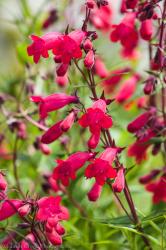
Arising from a Jelitto Seeds cross between a Mexican and a U.S. species, this compact, ruby-red beauty asserts an enduring versatile nature.
Undaunted by winter cold, summertime heat and humidity, ‘Sunburst Ruby’ bursts into bloom, announcing a wealth of richly colored tubes brightened by white throats.
A stalwart yet poised leafy base features sturdy stems and glistening slender green foliage that maintains a handsome presence throughout the season, and can be associated with Geranium ‘Orion’ and Helianthemum ‘St. Mary’s’.
Blooms June–September.
Size: 16" high x 16" wide.
Hardy to zone 6.
Penstemon ‘Port Wine’ (P-1996)
Each $11.75
Large trumpet-style blooms feature luxurious wine-hued tubes plus milky white throats inscribed with claret nectar guides. All this floral grandeur lodges upon a stately glossy foundation of erect stout red-tinged stems and winsome narrow green leaves. Celebrated as one of the best Penstemon cultivars, ‘Port Wine’ makes a heady bee-loving addition to containers, easy-care borders or bouquets.
Blooms June–September
Size: 3' 0" high x 3' 0" wide.
Hardy to zone 7.
Penstemon ‘Purple Tiger’ (P-1534)
Each $11.75
Introduced by Oregon’s Joy Creek Nursery, this robust Penstemon stands straight while delivering flared lavender-blue tubes decorated with white markings and rich purple striations. Similar in color to ‘Stapleford Gem’, but appearing deeper and more saturated, the arresting flowers crown wide, fine-toothed lusty leaves. Combine ‘Purple Tiger’, Aster ‘Lutetia’ and Achillea ‘Marmalade’ in the garden or a vase for a cheery slice of summer.
Blooms June – October.
Size: 2-1/2' high x 2' 0" wide.
Hardy to zone 7.
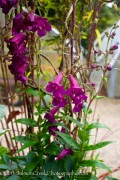
Large tubular flowers in a burgundy so lavish and dark they redefine the word “velvety,” enhance this Penstemon. Deep green foliage, red-hued stems and a generous blooming season offer additional enticements, especially when planted with Campanula ‘Prichard’s Variety’ and Rudbeckia paniculata.
Blooms June–October.
Size: 2' 0" high x 2' 0" wide.
Hardy to zone 6.
Penstemon ‘Schoenholzeri’ (P-0770)
SAME AS Penstemon 'Firebird'
Email me when this plant is available
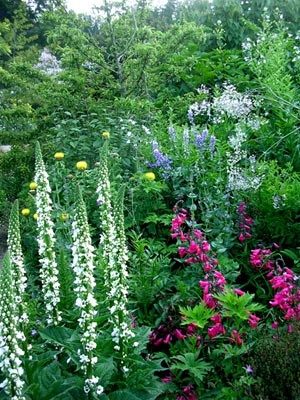
(Penstemon ‘Ruby’)
Lush, deep green foliage and rich burgundy stems create a perfect foil for some of the most sumptuous Penstemon flowers we’ve seen. The calyxes and buds are a wine color similar to the stem, and upon opening, each lively red bloom reveals a white throat with pale pink stripes. Intense scarlet and magenta hues, which appear to glow, highlight the flared tips.
Blooms July–October.
Size: 3' 0" high x 2-1/2' wide.
Hardy to zone 6.
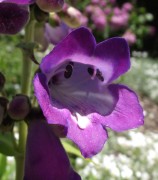
Earning the prestigious RHS 1993 Garden Merit Award, this outstanding Penstemon’s large, delicately colored trumpets seems to shimmer with hushed violet-blue-hued petals and paler, purple striated white lower lips and throats. Waxy green, lance-shaped leaves densely cloak the robust lush-looking foundation while wine-red stems add warm accents.
Blooms June – September.
Size: 2' 0" high x 2' 0" wide.
Hardy to zone 6.
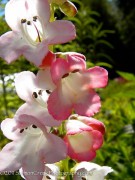
The cultivar name for this Penstemon is deceptive. With deep green foliage, upright stalks that withstand wind and rain, and bright white tubular blooms, which look like they were dipped in raspberry jam, ‘Thorn’ is cheerful and vigorous. The rose-red blossom tip fades to a blush after the flower opens. Accent these color changes and take advantage of size by blending with Geranium x magnificum, Lavandula ‘Sawyers’ or Aster ‘October Skies’ in the middle or front of the border.
Blooms July–November.
Size: 2' 0" high x 2' 0" wide.
Hardy to zone 6.
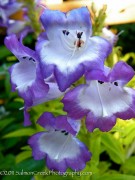
As if pursed for a kiss, this show-stealing Penstemon flaunts large, wide-mouthed white flowers with flared, bright purple lips. Not only BIG, but bountiful as well, the sassy blooms exhibit a snow-white throat and mauve tinges on the outside. ‘Violet Kissed’ is a Joy Creek Nursery introduction whose boldly colored pomp, lustrous foliage and tidy habit earn it a warm welcome in any garden bed.
Blooms June – October.
Size: 2' 0" high x 15" wide.
Hardy to zone 7.
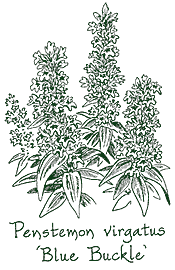
A noteworthy low growing foundation gives way to proud stiff upright stems carrying crowded clusters of large blue-violet blooms with lighter purple markings. Poised above narrow gleaming dark green leaves, the uninhibited floral display promises to attract gardeners and hummingbirds alike. Just right for edging a path, nestling in the rockery or gracing a container, this resilient Jelitto Seeds introduction can easily handle heat, drought and cold.
Blooms July–September.
Size: 15" high x 12" wide.
Hardy to zone 6.
Perovskia
Russian Sage
Hailing from southern Asia, east through Afghanistan, Pakistan and Iran to China, Perovskia’s common name alludes to Vasily Perovsky, a Russian general who canvassed the region in the 1850s. This cold-hardy genus is singular for its myriad long-blooming flowers that galvanize hummingbirds, butterflies and bees plus its valiant character that braves deer, rabbits, cold weather as well as dry locales.
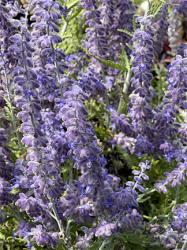
Plucked from a tray of ‘Blue Spire’ seedlings by British plant breeder Peter Catt, ‘Lacey Blue’ is a superb long-lived selection that’s big on flowers and small in stature. Cherished by hummingbirds and fantastic in a vase, long-blooming masses of uniquely large blue-purple flowers garnish stiff upright spikes. Thickset frosted stems plus finely dissected, gray-green leaves, emitting a spicy scent and sporting soft hairs with a subtle silvery sheen, define the compact short bushy mound. This rugged undemanding perennial appreciates a spring pruning and makes an exemplary candidate for hot dry sharp-draining spots, especially where space is scarce. (pp#20,845)
Blooms July–mid-October
Size: 18" – 2' 0" high x 2' 0" – 2-1/2' wide.
Hardy to zone 4.
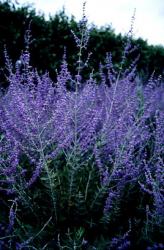
This well-behaved hearty perennial debuts branching silver spikes, sporting a long-lasting violet-blue mist comprised of countless, tiny close-set flowers. The dazzling display tarries on firm, erect steel-hued stems lined in tasteful, serrated gray-green leaves. Smaller than the species, with a little less spread, low-maintenance ‘Blue Steel’ grants stately soft-looking accents to mixed borders, cottage gardens and Mediterranean plantings.
Blooms July–mid-October
Size: 2-1/2' – 3' 0" high x 2' 0" – 2-1/3' wide.
Hardy to zone 4.
Perovskia atriplicifolia ‘Little Spire’ (P-2053)
Each $12.00
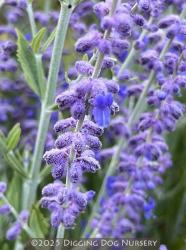
Hats off to Dutch plant breeder Herbert Oudshoorn for this trim smaller-sized Perovskia, which rarely grows more than 2 ft. tall. Upstanding slim white stems plus small finely dissected pewter-green leaves weave a compact luminous habit beneath whorls of 2-lipped, smoky lavender-blue flowers on large laden spires. Aromatic and accommodating, ‘Little Spire’ can be lodged in the rockery, along pathways or in tight spots with Salvia ‘Blue Marvel’ or Stachys ‘Densiflorus’. (pp#11,643)
Blooms July–mid-October
Size: 2' 0" – 2-1/2' high x 2' 0" – 3' 0" wide.
Hardy to zone 4.
Persicaria
Knotweed
Poor Persicaria! Certain weedy, invasive members of the genus have given the rest a bad name, and discouraged gardeners from getting to know these versatile performers. Our garden-worthy selections are happiest in semishade with ample moisture.
Persicaria affinis ‘Dimity’ (P-0250)
Each $11.00
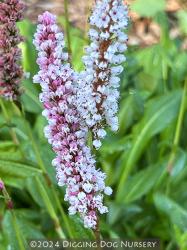
The deep green leaves of this graceful ground cover turn a rich brown during the winter and form a thick mat over a few seasons. The jointed, wine-red stems pick up the accents in the white and crimson flowers which are arranged, lavenderlike, along dense 2 to 3 in. terminal spikes held over a foot above the foliage. As the blooms mature, they darken to a crimson-rose shade, and finally end their days colored a rich rusty brown.
Blooms late May–September.
Size: 18" high x 3' 0" wide.
Hardy to zone 3.
Persicaria amplexicaulis ‘Fat Domino’ (P-1853)
Each $13.75
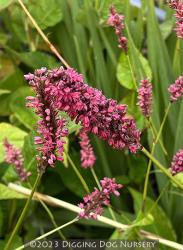
Evolving from a 2002 Belgian breeding program, ‘Fat Domino’s leafy deep green foundation hosts a rubescent surge of long chubby, dark red racemes that don purplish overtones. Dashing, large pointed textural foliage is loosely arranged on numerous staunch, upright jointed stems. With a reliable saucy stance plus sumptuous enduring flowers, this strong growing Persicaria can be positioned right up front and superimposed against white-flowering Verbascum ‘Flush of White’, where it easily turns heads until the season’s end.
Blooms August–October
Size: 3' 0" high x 3' 0" wide.
Zone 5/6.
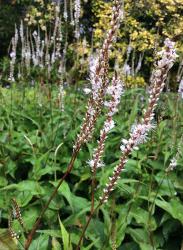
Legions of slim white fleecy tapers, cresting tall straight stalks, promote cool floral accents for a hot summer day. Enhanced by prominent midribs, wavy margins and cordate bases, the large pointed matte green leaves fashion an attractive upright bushy clump that doesn’t spread and looks classy, especially when coupled with other snowy bloomers such as Astilbe ‘Ellie’ and Aster ‘White Lovely’.
Blooms August – October.
Size: 3-1/2' high x 3' 0" wide.
Zone 5/6.
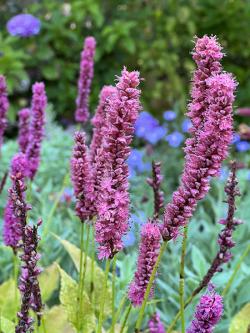
Hats off to Belgian plant breeder Chris Ghyselen for this relatively new cultivar that expands the species’ floral spectrum with a lovely shade of mauve suffusing its spiky rich pink flowers. The lavish flower display tirelessly persists into early autumn atop a lush brawny ensemble defined by large arrow-shaped green leaves with reddish margins. Tantalizing to pollinators and plant-alcoholics, ‘Amethyst Summer’ can rollick amid other late season bloomers such as Echinops ‘Taplow Blue’ or Aster ‘Violetta’.
Blooms August–October
Size: 3' 0" high x 3' 0" wide.
Zone 5/6.
Touted as the brightest red bloomer of the species, this Chris Ghyselen introduction delivers a vivacious late season display that delights pollinators and floral designers alike. The slim well-endowed red tapers dance above long sturdy stems plus large heavily-veined green leaves, each with a cordate base and pointed tip. Promoting bold verdant texture and undemanding durability, ‘Anne’s Choice’ can be planted in natural-style venues with mates like Rudbeckia ‘Loofahsa Wheaton Gold’ or Sanguisorba ‘Morning Select’.
Blooms late June–October
Size: 2' 0" – 2-1/2' high x 2-1/2' – 3' 0" wide.
Zone 5/6.
Persicaria amplexicaulis ‘Blackfield’ (P-1891)
Each $13.75
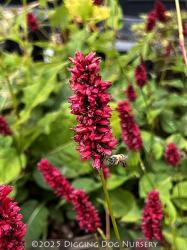
Raised by Chris Ghyselen, the Belgian who introduced ‘Fat Domino’, this long-flowering must-have Persicaria bears frisky tapers, parading dark-tipped unopened buds and deep dusky-red flowers. The full-toned blooms make a splendid spectacle above energetic flowing mounds of bold lance-shaped leaves that greet autumn with buttery-yellow hues.
Blooms August–October
Size: 3' 0" high x 3' 0" wide.
Zone 5/6.
These lance-shaped gold-infused green leaves promise to perk up the darker recesses of your landscape. Perched over a bright leafy mass, narrow tassel-like spiky flowers create an irresistible splash of vibrant cardinal-red accents.
Blooms August–October
Size: 2-1/2' – 3' 0" high x 0" & spreading wide.
Hardy to zone 4.
Persicaria amplexicaulis ‘Inverleith’ (P-0548)
Each $13.75
A leafy dwarf form of Persicaria amplexicaulis, this low growing cultivar has narrow foliage, crimson tapers and a refined appearance. It makes a perfect understory for late blooming Hydrangea ‘Unique’.
Blooms August?October.
Size: 18" high x 0" & spreading wide.
Zone 5/6.
Persicaria amplexicaulis ‘Orange Field’ (P-1708)
Each $13.75
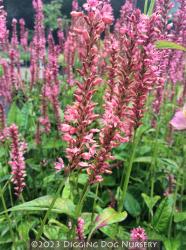
A mainstay for bridging the gap between summer and fall, this new Belgian introduction imparts vertical late season floral color plus lusty foliage. Green spear-headed leaves compose a big bushy base that propels an irresistible flood of long-lasting, slim 4 in. tall, coral and scarlet-hued tails. Ensconce ‘Orange Field’ in the mixed border, where its exhilarating shades either meld with Salvia confertiflora or bring a lift to white Hydrangeas, Phlox, and blue-flowering Salvias.
Blooms August–October
Size: 3' 0" high x 3' 0" wide.
Zone 5/6.
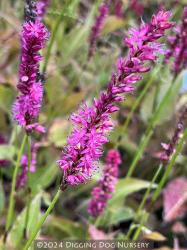
Selected by acclaimed Belgian landscape architect and plant breeder Chris Ghyselen, this easy-going robust perennial yields spectacular legions of lithe extralong terminal spires crowded with petite purplish red flowers from early summer ’til frost. The steadfast stalks are clad in large, ripple-edged pointed green leaves that render a substantial, spunky foundation. Well-suited for adequately-moist borders, informal plantings or pondside, either as a stand-alone or en masse, ‘Purple Spears’ injects prismatic accents amongst America natives like Eupatorium ‘Purple Bush’ and Panicum ‘Purple Tears’.
Blooms late June–October
Size: 3-1/2' – 4' 0" high x 3' 0" wide.
Zone 5/6.
Persicaria amplexicaulis ‘Summer Dance’ (P-1312)
Each $13.75
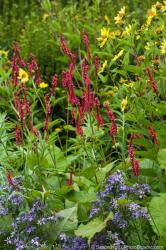
With foliage that’s close to lime-green, and spiky floral tails that approach the scarlet spectrum of rosy pink, this slow spreading perennial is sure to please.
We brought ‘Summer Dance’ home from Piet Oudolf’s Dutch nursery and have come to appreciate its brighter, less rambunctious nature. Swaying to a late summer breeze, our stand lives up to its name while cheerfully commingling amid Anemone ‘Andrea Atkinson’ in the border.
Blooms August–November.
Size: 3' 0" high x 0" & spreading wide.
Zone 5/6.
Persicaria amplexicaulis ‘Taurus’ (P-1709)
Each $13.75
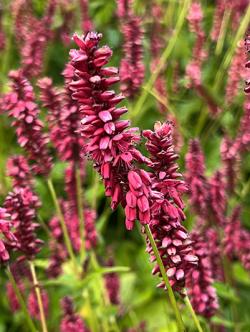
Zesty rose-madder colors imbue the densely packed rotund tapers of this steadfast Blooms of Bressingham introduction. Perfect for arrangements and championed as richer and fuller than most Persicarias, the vivacious long-blooming flowers prance above a carefree mound of medium green triangular leaves. Intermingle ‘Taurus’ with Eupatorium purpureum, Aster ‘Blue Danube’ and Helianthus ‘Lemon Queen’, and a pleasing late season medley is yours to enjoy. (pp#9682)
Blooms August–October
Size: 3' 0" high x 3' 0" wide.
Zone 5/6.
Persicaria bistorta ‘Hohe Tatra’ (P-1945)
OUT OF PRODUCTION AT THIS TIME
Email me when this plant is available
Above low-lying large Dock-like green leaves with undulating margins, the firm upright branching stems release a fluffy floral pageant of plump, dense-set bright pink pokers. This hearty AGM winner grows as a handsome easy-care ground cover, emphasizing jubilant blooms that are more vividly colored and a bit later plus a tad smaller than its similar sister ‘Superba’. Prized by butterflies and flower arrangers, ‘Hohe Tatra’ effectively knits together shrubs and taller perennials in an adequately moist mixed border.
Blooms May–July
Size: 18" – 2' 0" high x 2' 0" wide.
Hardy to zone 4.
Persicaria bistorta ‘Superba’ (P-0115)
Each $12.75
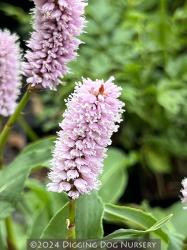
Copious crepe paper-like dark green leaves in curly festoons decorate the base of these showy and long-lasting 4 to 5 in. spikes of dense pale pink flowers. This Persicaria is perfect for cutting and admirable in the border with Digitalis ‘Snow Thimble’, while its clump-forming base can easily be divided every few years.
Blooms April–June
Size: 2' 0" high x 2' 0" wide.
Hardy to zone 4.
Persicaria microcephala ‘Red Dragon’ (P-0859)
Each $11.50
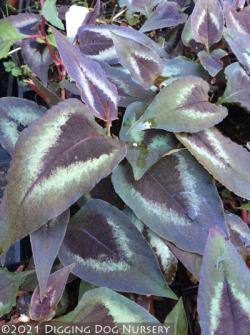
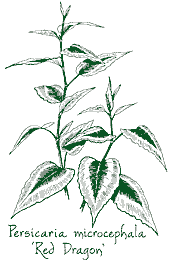
Darkly alluring, this sumptuous perennial has plenty of reason to be “big headed,” so we find the epithet microcephala a somewhat dubious observation. Each spring, deep red shoots emerge and lift themselves into a graceful arching form. Velvety leaves of a rich burgundy purple are dramatically marked with lance-shaped mint-green and silver chevrons, and later in the season are topped with delicate white flowers.
Visually arresting anywhere, plant ‘Red Dragon’ in a container or in the garden and let its gemlike elegance be set off by bright-leafed Spiraea ‘Magic Carpet’. It prefers moist soil, but can adapt to drier conditions.(PP# 12,062)
Blooms August–September.
Size: 3' 0" – 4' 0" high x 4' 0" wide.
Hardy to zone 5.
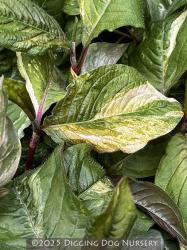
Artfully festooned with irregular patches of white and creamy yellow plus a central maroon chevron, each unique, large oval green leaf celebrates a lush exotic style. ‘Painter’s Palette’s broad variegated foliage cloaks jointed stalks, forming a fabulous foliar mound beneath petite red flowers on slender wispy stems. Tailor-made for smaller spaces, shady perennial borders, woodland plantings and cottage gardens, this slow-spreading easy-care nativar shuns most pests, looks lively in swathes, tolerates clay soil and favors some afternoon shade plus fertile moist alcoves. Judicious deadheading prevents unwanted seedlings.
Blooms July–September
Size: 18" – 2' 0" high x 18" – 2' 0" wide.
Hardy to zone 4.
Peucedanum
Cow Parsley
Peucedanum verticillare (P-1863)
Each $11.00
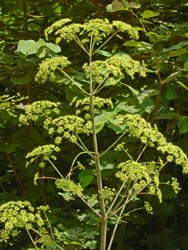
A denizen of Italy and southeastern Europe, this stately perennial hurls marvelous branching pinkish purple shoots clad with large bipinnate, frosted blue leaves, growing in a triangular fashion. Thick steadfast stems, somewhat channeled at their bases, shoulder a lofty multibranched display of huge yellow-green umbels. Giant Milk Parsley’s big bold presence makes an easy-care addition to the back of the border, a wildflower garden or naturalized meadow.
Blooms July–August
Size: 5-1/2' – 7' 0" high x 2' 0" wide.
Hardy to zone 6.
Phlomis
Jerusalem Sage
This genus belongs to the Mint family and includes about 100 perennials as well as subshrubs from the Mediterranean and western Asia. Drought resistant and hardy, many of the species will thrive in warm sunny sites and dry woodland edges. Ornamental whorls of purple, pink or yellow blooms open in the summer, providing long-lasting stems and flower clusters for fresh and dried decoration in the garden or kitchen.
Phlomis anatolica ‘Lloyd's Variety’ (P-1627)
Each $12.50
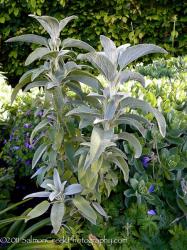
Brightened by white heavily veined undersides and light fuzzy stems, thick heart-shaped pewter green leaves craft a handsome flanneled appearance. Stiff swarthy stalks thrust upward, interspersed with large long lasting showy whorls of spicy scented helmet-like, rich yellow flowers. This rugged shrubby perennial develops a somewhat woody foundation over time, and always brings fulgent accents to hot exposed slopes, wind-swept seaside plantings or any other sharp-draining sunny locale.
Blooms June–September.
Size: 3' 0" – 4' 0" high x 3' 0" – 4' 0" wide.
Hardy to zone 7.
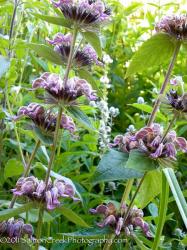
With a rugged constitution yet stately stature, this enduring Himalayan denizen spawns 12 in. long, spade-shaped gray-green leaves that emphasize a felted aspect, scalloped margins plus luminous silver undersides. Stout woolly stems shoulder the large whorled clusters of tubular lilac-pink blooms above a soft-looking bushy foundation. Adored by birds, bees and butterflies, Phlomis cashmeriana remains evergreen in milder climates, while appreciating proper air circulation, sunshine galore and sharp-draining soil.
Blooms June–August
Size: 2' 0" – 3' 0" high x 18" – 2' 0" wide.
Hardy to zone 5.
Phlomis ‘Edward Bowles’ (P-1892)
Each $12.50
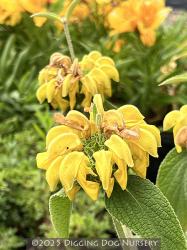
Launched in 1967 by Hilliers, a celebrated British nursery that supposedly received the namesake’s own garden seed, this grand hard-to-find Phlomis is an evergreen hybrid between Phlomis fruticosa and Phlomis russeliana. Commendable even on frosty winter mornings, the 6 to 10 in. tall spires are studded with large clustered snapdragon-like blooms composed of cream-colored hoods plus lemon-yellow lips. Daring spade-shaped green leaves, flashing felted finishes and silver undersides, attire staunch square upright stems beneath a colorful bumble-bee haven. Versatile, vigorous and dependable, deer-resistant ‘Edward Bowles’s can be added to mixed borders or water thrifty plantings.
Blooms June–early October
Size: 4' 0" high x 4' 0" wide.
Hardy to zone 7.
Each $11.75
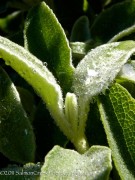
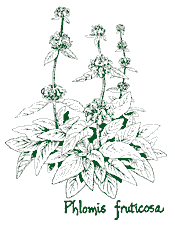
These bright yellow flowers bloom in a series of ball-like clusters known as verticillasters along stout stems and above felted, gray-green foliage. Used as a specimen or blended with Nepeta ‘Walker’s Low’ or Wood Oats, Phlomis fruticosa will provide bold color and form.
Blooms June–August.
Size: 4' 0" high x 3' 0" wide.
Hardy to zone 6.
Each $11.75
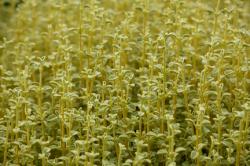
A golden aura infuses the small gray-green woolly foliage of this soft-looking 2002 AGM winner. Endemic to Crete, long-lived Phlomis lanata sports yellow hooded flowers, rising in whorled widely spaced tiers above a low compact foundation that wards off deer, rabbits and drought. Its stalwart good looks can be intermingled with Mediterranean neighbors such as Rosemary, Rock Roses and Eryngiums.
Blooms June–September
Size: 2' 0" high x 3' 0" wide.
Hardy to zone 7.
Each $12.50
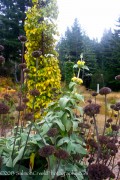
Asserting an architectural profile, thick straight stems broadcast separate whorls of hooded butter-yellow blooms. Its stalwart beauty even perseveres through winter—the stalks look equally impressive whether fresh or spent as they stand above large and broad, heart-shaped olive-green leaves. The fuzzy foliage forms a plush low growing, evergreen cover that keeps those pesky weeds at bay. In our garden, Phlomis russeliana casts dashing accents along a pathway, assorting with Aster ‘Fellowship’ and Molinias.
Blooms June–September
Size: 3' 0" high x 2' 0" & spreading wide.
Hardy to zone 4.
An intriguing architectural marvel, this bushy Mediterranean perennial swaggers tall, muscular upright stems trimmed with whorled fuzzy lilac blooms above a grand evergreen basal rosette. The unique hooded flowers emphasize rosy-pink lips plus purple calyces, while close-knit heart-shaped green leaves sport scalloped margins, gray flip sides and a downy finish. Undaunted by drought, bunnies or deer, easy-care Phlomis samia’s strong vertical habit can invigorate sunny banks, water-wise plantings and large rock gardens.
Blooms June–September
Size: 3-1/2' – 5' 0" high x 2' 0" – 3' 0" wide.
Hardy to zone 7.
Each $11.75
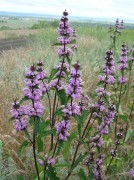
Distinguished by an AGM and the unusual small potato-like tubers sprouting from its roots, this exceptional Phlomis is adorned with hooded dusty-lilac blossoms, nestled within reddish calyxes, and sturdy deep crimson-tinged flower stalks. Large, toothed arrow-shaped green foliage lends an appealing texture, while grasses and Lavenders make good company.
Blooms May–June
Size: 3' 0" – 4' 0" high x 12" – 18" wide.
Zone 5/6.
Phlomis tuberosa ‘Amazone’ (P-1710)
Each $12.75
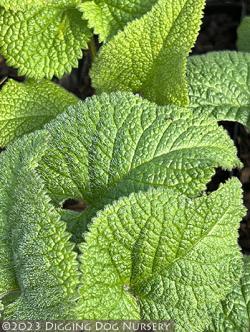
With arrow-shaped lush green leaves, lustrous burgundy stalks and tiered wreaths of rosy-lilac tubular flowers on statuesque stems, this well-mannered perennial adds dignity to the landscape. The toothed downy leaves forge a robust generous base that’s semievergreen in many locales and relatively drought tolerant. Equally at home in a formal setting or a meadow planting, versatile ‘Amazone’ can be planted amid Stachys ‘Superba’ and Salvia ‘Amethyst’ for a fantastic purple and pink mélange.
Blooms June–August
Size: 4' 0" – 5' 0" high x 2' 0" – 3' 0" wide.
Zone 4/5.
Phlomis tuberosa ‘Bronze Flamingo’ (P-2206)
Each $11.75
Beloved by birds, butterflies and floral designers, wondrous mauve-pink whorls of clustered hood-like pastel flowers alight staunch upright wine-hued stems in spaced intervals. The long-lasting blooms bestow striking vertical accents plus winter-time intrigue above an attractive basal clump characterized by crinkled, slightly fuzzy deep green leaves with a bronze flush. Undaunted by pesky deer and hot dry spells, this amenable perennial can be added to sunny well-drained mixed borders, cottage gardens and prairie plantings amid cohorts such as Salvia ‘Amethyst’ or Stachys ‘Hummelo’.
Blooms June–August
Size: 2-1/2' – 3' 0" high x 12" – 18" wide.
Hardy to zone 6.
Phlox
Chock-full of oomph and charisma, Phlox are enduring warm weather beacons, appreciating moist well-drained soil, frequent deadheading and deep basal waterings. Periodic thinning to just four or six stalks ensures healthier paniculata cultivars.
Phlox amplifolia ‘Winnetou’ (P-2293)
Each $11.50
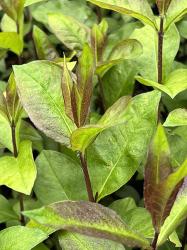
Packing a powerful prismatic punch, the good-sized close-set panicles are composed of dark mahogany flower stems and perfumed bright pink blossoms with bodacious violet-red centers. Apart from its cut-flower perfect posies, ′Winnetou′s mighty guise launches steadfast upright stalks clad in handsome, uniquely large, tapered green leaves enriched by maroon-infused undersides. This hard-to-find German cultivar lends a lush aspect plus untold charisma to well-drained borders or cottage gardens, where it braves most soil types and mesmerizes pollinators.
Blooms July–September
Size: 3' 0" high x 20" wide.
Hardy to zone 4.
Well-endowed with sassy cherry-red flowers clustered in large, perfumed conical trusses, ‘Miss Mary’ is a floral bombshell. Attractive lance-shaped green leaves that tout good mildew resistance plus durable, not-so-tall stems compose her robust, yet compact stance. Awarded a 4-star rating in the Chicago Botanical Garden trials, this must-have pollinator temptress is tailor-made for a midborder position, flaunting reliable, long-lasting brilliant color upon bedfellows such as Sanguisorba ‘Cangshan Cranberry’ or Sedum ‘Neon’.
Blooms July–September
Size: 2' 0" – 3' 0" high x 18" – 2' 0" wide.
Hardy to zone 3.
Phlox divaricata ssp. laphamii ‘Chattahoochee’ (P-1998)
OUT OF PRODUCTION AT THIS TIME
Email me when this plant is available
Consistently receiving the highest ratings in the Chicago Botanical Garden’s Phlox trials and on many a top-10 perennial list, this cherished early-blooming perennial hails from the Chattahoochee River Valley. A probable hybrid between P. divaricata var. laphamii and P. pilosa, the low growing colonizing habit yields glossy lance-shaped foliage topped by airy slightly fragrant clusters of tubular pastel lavender-blue flowers with maroon throats. Its dainty floriferous charm belies an all-around plucky mettle that tackles deer, drought, clay soil and deep shade, while entertaining butterflies, hummingbirds and all who usher it into their gardens.
Blooms April–early June
Size: 9" – 12" high x 16" – 2' 0" wide.
Hardy to zone 3.
Phlox divaricata ‘London Grove Blue’ (P-1946)
OUT OF PRODUCTION AT THIS TIME
Email me when this plant is available
Discovered by the astute folks from North Creek Nursery at a plant sale in London Grove, PA, this handsome shade-happy ground cover is a light blue flowering form of the eastern North American woodland Phlox. The sweetly fragrant 5-petaled blooms are held in loose clusters that lure the butterflies and hummingbirds, while widely spaced lance-shaped green foliage forms an attractive spreading compact clump, coloring fall days with burgundy shades. Appreciative of fertile, adequately moist, free draining abodes, ‘London Grove Blue’ mingles well with Aquilegia ‘Kristall’, Tiarella ‘Dark Star’ and Geranium phaeum ‘Album’.
Blooms April–May
Size: 12" – 15" high x 10" – 18" wide.
Hardy to zone 4.
A vigorous endearing selection of our native woodland Phlox developed by esteemed plant designer Piet Oudolf, ‘May Breeze’ delivers bright sweetly scented accents to shady settings. Quantities of starry, narrow-petaled open blooms gather like pale blue to pure white clouds, floating above oblong deep green foliage. Perfect for weaving amid spring bulbs, Columbines and Beesia deltophylla, this attractive deer-tolerant Phlox slowly spreads to form a small, easily grown, disease-proof semievergreen patch that charms hummingbirds and butterflies plus handles hot humid summers.
Blooms April–May
Size: 12" – 15" high x 10" – 18" wide.
Hardy to zone 4.
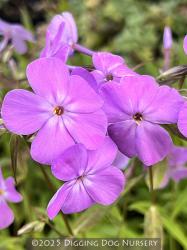
A top-performer at Mt. Cuba’s Phlox trials for its sturdy, disease-resistant habit plus redolent flower-power, ‘Forever Pink’ is the brainchild of Dr. Jim Ault, the Chicago Botanical Garden’s talented plant breeder. Fancied by butterflies and hummingbirds, vivacious 1 in. wide, saturated pink blooms are thankfully sterile, unfurling prior to the paniculatas in early summer, then again in autumn. This Phlox glaberrima ssp. triflora and Phlox ‘Bill Baker’ descendant hosts mildew-free light green leaves and strong upright stems, which form a uniform, mostly evergreen, close-knit basal clump.
Blooms June & September–October
Size: 16" high x 18" wide.
Hardy to zone 4.
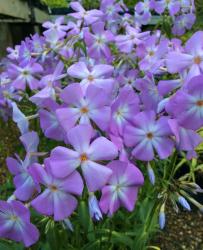
Maximum flower-power and a robust disease-resistant temperament earned ‘Morris Berd’ 4 stars in the Phlox evaluations held at the Chicago Botanical Garden. Oodles of sweet smelling, clear rose-pink flowers populate lovely large panicles, while slim, bluntly pointed leaves with smooth edges define the compact, shiny dark green foundation. A somewhat taller, spring-blooming cultivar, this first-class Phlox detests drought, and flourishes in hot humid weather as well as moist rich niches.
Blooms May–June
Size: 15" – 2' 0" high x 18" – 2' 0" wide.
Hardy to zone 3.
Each $11.50
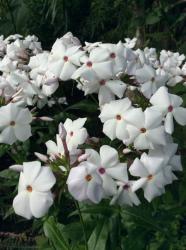
A natural occurring hybrid between Phlox maculata and possibly Phlox glaberrima, this fabulous mildew-resistant Phlox is the happy outcome of a chance roadside sighting in Kemper, Mississippi by plantswoman Karen Partlow. Remaining unblemished all season, the long, slender glossy fresh green leaves clothe firm compact stems, bolstering droves of large rounded clusters with sweetly perfumed, crisp white flowers. Excellent for the front lines or where space is scarce, ‘Minnie Pearl’s virtues are plentiful: lengthy bloom time, short upright stance, slow spreading, pest-free habit and fantastic flowers that beguile the butterflies and hummingbirds and look fetching in a bouquet.
Blooms mid-April–June
Size: 12" – 18" high x 2' 0" wide.
Hardy to zone 5.
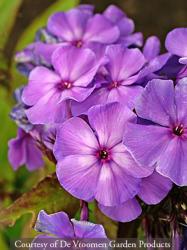
This reliable hard working beauty parades massive ambrosial trusses hoisted by a compact bushy pedestal of well-branched sturdy stems and tailored green leaves that look lush all the way to the ground. The stylish, broad nearly 1 ft. tall blooms unfurl in light blue hues, mature with dazzling deep blue-violet shades and develop reddish purple margins as they age, while their stunning colors appear either more blue or more purple depending upon the light.
Blooms July–September
Size: 2' 0" – 3' 0" high x 18" – 2' 0" wide.
Hardy to zone 5.
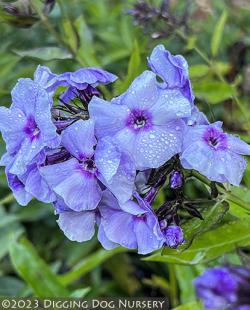
Selected by German plant enthusiast M. Buchner and named for the castle gardens where it was found growing, this early 1900s cultivar is a well-loved enduring heirloom steeped in old-fashioned panache. Substantial fast-developing stems plus handsome green leaves give way to pointed lilac-colored buds and good-sized light violet-blue flowers that showcase prismatic carmine eyes as well as lavender-tinted flip sides. Wafting a heady fragrance laced with jasmine, honeycomb and cinnamon notes, ‘Countess of Schwerin’s posh nearly iridescent panicles can be sprinkled amongst Veronicastrum ‘Cupid’ and Molinia ‘Purple Infusion’, where they nourish butterflies and appear more blue at dusk or upon maturity.
Blooms July–September
Size: 2-1/2' – 3' 0" high x 18" – 2' 0" wide.
Hardy to zone 4.
Phlox paniculata ‘David’ (P-1344)
Each $11.50
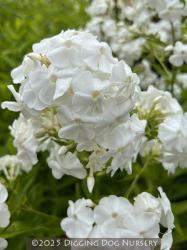
Back in 1987, F. M. Mooberry of The Brandywine Conservancy spotted this outstanding, chance seedling and named it after her husband. A quintessential summertime border plant, ‘David’ is highly prized for his lustrous mildew-resistant greenery and huge, long-blooming fragrant flowers. Shapely triangular panicles illuminated in classic white stand some 6 to 9 in. tall, and nearly as wide, on erect stems with narrow, bristle-edged dark green leaves that are arranged in pairs.
Blooms July–September
Size: 3-1/2' – 4' 0" high x 3' 0" wide.
Hardy to zone 4.
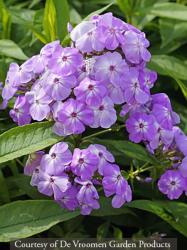
Originating as a chance sport of the esteemed variety, ‘David’, this cultivar flaunts broad, 8 to 10 in. tall, tightly packed flower heads with enchanting lilac hues. ‘David’s Lavender’ is a sophisticated summer mainstay for the garden that lures both gardeners and butterflies alike, especially when accompanied by Persicaria ‘Summer Dance’ and Centranthus ‘Pretty Betsy’. This floriferous Phlox possesses excellent mildew resistance. (PPAF)
Blooms July–September
Size: 3-1/2' – 4' 0" high x 3' 0" wide.
Hardy to zone 4.
Phlox paniculata ‘Gzhel’ (P-2292)
Each $11.50
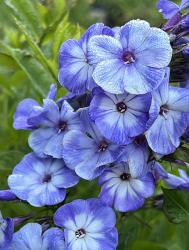
Named for the high-quality folkloric ceramics that originated in Gzhel, a Russian village near Moscow, the large, long-blooming rounded flower heads showcase similar colors above strong lanky stalks and dark green leaves. Vibrant blue-violet, lilac and porcelain-streaked petals swirl around a bright purple eye, their dreamy hues changing with the day’s weather. This coveted seldom-offered Phlox adds grace to cut creations, wafts a sweet scent plus musters a carefree cold-hardy temperament.
Blooms July–September
Size: 3' 0" – 3-1/2' high x 2' 0" wide.
Hardy to zone 4.
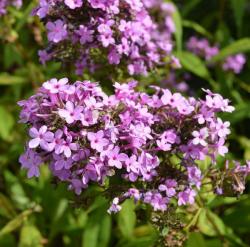
Delighting both gardeners and butterflies, ‘Jeana’s magnificent tiered lavender-pink terminal clusters unfurl in a tightly packed fashion atop brawny, upright branching stems. Discovered by Jeana Prewitt on the banks of Tennessee’s Harpeth River, this delectable Phlox has a lot to toot its horn about: topnotch mildew resistance, perky slender green leaves throughout the season and large sweetly aromatic long-blooming flowers that incite a welcome frenzy of pollinator activity.
Blooms July–September
Size: 3' 0" – 4' 0" high x 2' 0" – 3' 0" wide.
Hardy to zone 4.
Phlox paniculata ‘Juliglut’ (P-2054)
Each $11.50
Developed by famed German plant breeder and nurseryman Karl Foerster, this flamboyant Phlox has been gracing gardens since 1934. German for ‘July Glow’, large conical wine-red panicles put on the ritz atop an upright lusty clump, attired in slender, glistening medium green leaves. Seductive to pollinators and all who behold them, the flirty, scented flowers flash a dark eye, promising to create a summer ruckus in borders or more informal venues when associated with Veronicastrum ‘Erica’, Molinia ‘Purple Infusion’ and Eupatorium ‘Glutball’.
Blooms July–September
Size: 2-1/2' – 3' 0" high x 18" – 2' 0" wide.
Hardy to zone 4.
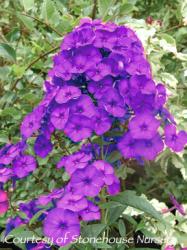
Earning 4 stars at the Chicago Botanic Garden’s Phlox trials, this well-endowed beauty premiers large scented pyramidal trusses poised in glamorous repose atop stiff steadfast stems and slender lance-shaped green leaves. Dark pinkish purple shades, which intensify as the plant matures, saturate the tight set velvet-rich flowers, composed of individual florets, each with a tubular corolla and 5 flat petal-like lobes. A popular attraction for winged visitors and a perfect choice for bouquets, ‘Nicky’ can be planted near Filipendula rubra ‘Venusta’ and Eupatorium ‘Gateway’.
Blooms July–September
Size: 3' 0" – 4' 0" high x 2' 0" – 3' 0" wide.
Hardy to zone 5.
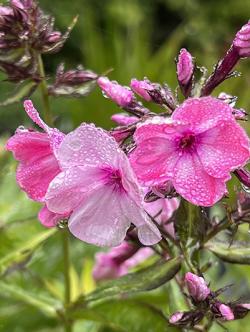
This plucky historic cultivar was introduced in 1938 by acclaimed Russian Phlox breeder Pavel Gaganov. The large close-knit conical heads house marvelous nonfading pale pink flowers, each featuring wavy and somewhat overlapping petals dressed with a luminous white central ring plus a stunning crimson eye. Unparalleled for border plantings, ‘Olenka’s strong, slender, spreading stems and smooth lanceolate green leaves forge a tidy, easy-care mildew-resistant foundation beneath the long-lasting tricolored blooms that tempt pollinators, plant lovers and floral designers.
Blooms July–September
Size: 2' 0" – 3' 0" high x 18" – 2' 0" wide.
Hardy to zone 4.
Phormium
New Zealand Flax
OUT OF PRODUCTION AT THIS TIME
Email me when this plant is available
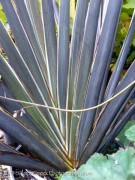
This upright moderately sized Flax sprouts sword-shaped blades the color of milk chocolate and bears the name of the late, acclaimed plantsman and nursery owner who brought it back from New Zealand. Heightened by delicate pink and cream margins, a channeled midrib and smoky olive green undersides, the scrumptious foliage is somewhat lax toward the tips, which either gracefully fall outward or arch downward.
A tranquil medley of dark yet muted hues and bold texture, ‘Ed Carmen’ combines well with Cistus ‘Decumbens’ and Correa ‘Dusky Bells’.
Size: 2' 0" – 3' 0" high x 2' 0" – 3' 0" wide.
Hardy to zone 8.
Phormium ‘Jack Spratt’ (P-1462)
Each $12.00
A handsome more diminutive character amid a family of mostly massive relatives, we’re surmising this Phormium’s “could eat no fat” stature inspired its nursery rhyme name. Mr. J. Burton of Hamilton, New Zealand selected little Jack for his tidy, fan-shaped evergreen clumps of twisting, ½ in. wide bronzed blades that first emerge olive-green then transmute to a reddish mocha color.
With year-round good looks, he is as stalwart as he is versatile, tolerating dry conditions, yet detesting heavy soils or being planted too deep. ‘Jack Spratt’ can be showcased in a small container, along a path or en masse superimposed against gray-leafed Stachys ‘Helen Von Stein’.
Size: 12" – 2' 0" high x 12" – 2' 0" wide.
Hardy to zone 8.
Phormium ‘Pink Stripe’ (P-1733)
OUT OF PRODUCTION AT THIS TIME
Email me when this plant is available
Phygelius
Cape Fuchsia
Birds simply love the lazy clusters of long, nodding, tubular flowers that cover Phygelius all summer long. Gardeners, too, will love this fast growing subshrub from South Africa, because no matter what the cultivar, the Cape Fuchsia adds a luscious, colorful look to any garden. Members of the Snapdragon family, Phygelius grow in well-drained soil, and their handsome, glossy, deep green foliage remains evergreen in milder climates.
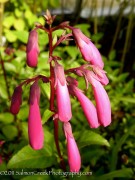
Flaunting vibrant pink-throated, deep carmine-pink trumpets that daintily swirl around burgundy-tinted stems, ‘Sensation’ is truly sensational!
Sturdy and low growing, this new Phygelius’ high-spirited color promises summery pizzazz peeking through a billowing mound of Geranium ‘Jolly Bee’. PP#13464.
Blooms June?September.
Size: 3' 0" – 4' 0" high x 3' 0" wide.
Hardy to zone 7.
A recent Xera Plants introduction, this vigorous South African shrubby perennial presents green calyces, clasping slim tubular blooms that gradate in color from deep reddish salmon to peach. Defined by daintily flared maroon-edged warm yellow tips, flaxen throats and burgundy stamens, the long blooming floral spires crest a compact semi-evergreen foundation of thick serrated shiny green leaves. ‘Peach Trombone’ delivers summertime zest, enjoys fertile well-draining soil and lures hummingbirds.
Blooms June–September
Size: 2-1/2' high x 3' 0" wide.
Hardy to zone 7.
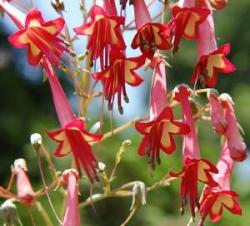
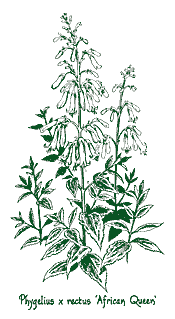
The first hybrid in this remarkable series, ‘African Queen’ displays regal splendor befitting its name, bearing exquisite reddish orange flowers with lemon-yellow throats. Beside Geranium ‘Phillipe Vapelle’, this selection provides a riot of color and contrast.
Blooms June–September
Size: 3' 0" high x 3' 0" wide.
Hardy to zone 7.
Phygelius x rectus ‘Moonraker’ (P-0624)
Each $11.50
Phygelius x rectus ‘Pink Elf’ (P-0600)
Each $11.50
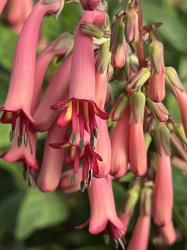
Impish ‘Pink Elf’ promises densely clustered salmon-pink flowers embellished with warm yellow throats. Distinctive for its compact growth habit and its ability to slowly spread by underground stems, this Phygelius looks enticing next to the silvery foliage of Kniphofia ‘Malibu Yellow’.
Blooms June?October.
Size: 2' 0" high x 3' 0" wide.
Hardy to zone 7.
Phygelius ‘Trewidden Pink’ (P-1313)
Each $11.50
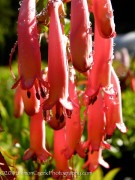
For all those who take the time to peer inside these dusky salmon-pink pendants, an enticing surprise awaits you. The flared petals reveal a brilliant sunburst of yellow rimmed with cherry-red. Lifted on rubescent stems above lustrous, verdant leaves, the closely arranged blooms can be juxtaposed against Teucrium fruticans’ (Select Form) gray foliage and periwinkle-blue flowers.
Blooms June–October.
Size: 3' 0" high x 3' 0" wide.
Hardy to zone 7.
Phyteuma betonicifolium (P-2108)
Each $11.25
Populating the open woodlands and alpine meadows of southwestern Europe plus the European Alps, this signature Campanula relative premiers extraordinary candle-like blue-violet flowers all summer long. The upright, dense panicles adorn a compact clumping cushion of lanceolate and glabrous green basal leaves that spring from a carrot-shaped taproot. Referenced in the Brothers Grimm Rapunzel fairytale, seldom cultivated Betonian Rampion lends peerless, spiky cool-hued accents to cut arrangements or the rockery, where it craves cool conditions with adequate drainage as well as poor, lean, somewhat acidic soil.
Blooms May–August
Size: 15" – 18" high x 9.8" wide.
Hardy to zone 4.

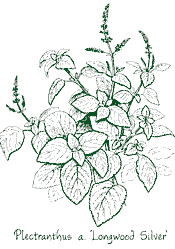
A remarkable foliage plant with a soft and alluring look, ‘Longwood Silver’ is equally suited to the border or a container, quickly developing felted silvery leaves that become greenish gray and more textured as they mature. Thick, fuzzy purple-hued stems seem to glow and match the color of the branching lilac-hued flower spikes.
Blooms August–October
Size: 2' 0" high x 3' 0" wide.
Hardy to zone 8.
Plectranthus ‘Zulu Wonder’ (P-1732)
Each $11.00
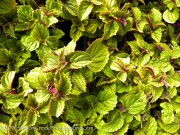
With decoratively toothed margins and prominent veins, thick rounded green foliage flaunts sumptuous dark reddish purple flipsides, while the same rich hue suffuses the succulent stems, long leaf petioles and midribs. The stunning foliar contrast is reason enough to plant this south African beauty, but the delightful late season showing of speckled dark lilac flowers on long spires makes it indispensable.
Blooms August–October.
Size: 10" high x 18" – 2' 0" wide.
Hardy to zone 9.
Podophyllum
Flourishing in moist, humus-rich niches, Podophyllum’s vigorous fleshy rhizomes form a substantial colony. Every part of Podophyllum is toxic except the ripened “apples,” although recent studies indicate the entire plant contains promising medicinal properties including anticancer and other healing compounds.
Each $12.25
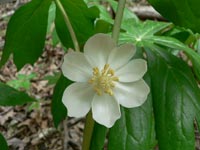
Found throughout most of eastern North America and southern Texas, this captivating rhizomatous woodland perennial propels pleated, spiral-wrapped leaves up through the soil and heralds spring. With a long central stalk attached to its flip side, the polished, deeply divided green foliage is palmately lobed and spans over 12 in. across, dramatically unfurling in an umbrella-like fashion. A lone, winsome waxy white blossom, defined by six to nine overlapping rounded petals plus prominent yellow stamens, dangles underneath the leaf axil on a short slim pedicle. The extraordinary show continues as edible, round egg-size green fruit turn golden. Appreciative of moist, humus-rich niches, Podophyllum peltatum′s slow-spreading fleshy roots eventually form a robust colony that imparts unparalleled lushness to woodlands and shady borders, yet retreats into summer dormancy and should not be consumed.
Blooms April
Size: 12" – 18" high x 12" – 18" wide.
Hardy to zone 3.
Polemonium
Jacob’s Ladder
Polemonium ‘Bressingham Purple’ (P-2154)
Each $11.75
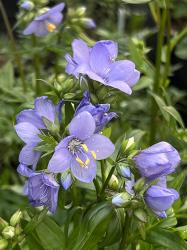
A chromatic Adrian Bloom selection, this lush ferny-leafed perennial made its initial debut at the Chelsea Flower Show in 2002. Premiering rich purple hues during spring and fall plus a neat ladder-like aspect, some 27 odd-pinnately compound leaflets form a close-set dark green mound. Charming, loosely arranged, scented clusters of cup-shaped brilliant lavender-blue blooms on sturdy burgundy-colored stems rollick above. ‘Bressingham Purple’ relishes cool summer locales plus consistently moist and somewhat shady niches, but detests hot humid summers. (pp#15,367)
Blooms April–May
Size: 15" – 18" high x 15" – 18" wide.
Hardy to zone 4.
Polemonium ‘Northern Lights’ (P-1769)
OUT OF PRODUCTION AT THIS TIME
Email me when this plant is available
Hallmarked by clear true-blue hues, a delectable fragrance and deep yellow centers, plentiful large silky flowers are clustered atop sturdy upright stems. A compact and ferny deep green basal mound of long, finely cut alternate leaflets anchors the beautiful sterile blooms that will not reseed. ‘Northern Lights’s low, tidy mildew resistant habit prefers a bright, evenly moist, well-drained abode, detests hot humid weather and appreciates a judicious dividing each spring to ensure its longevity.
Blooms April–May.
Size: 12" – 16" high x 12" wide.
Hardy to zone 4.
Polemonium yezoense ‘Purple Rain Strain’ (P-1393)
OUT OF PRODUCTION AT THIS TIME
Email me when this plant is available
Named after King Polemon of Pontus, this genus is distinguished by fernlike foliage with nearly 20 neatly arranged leaflets, believed in Roman times to symbolize the ladder that spanned heaven and earth in Jacob’s dream.
Asserting a dark mystique, this recently introduced Polemonium cultivar is heralded for the reddish purple and bronze tones of its lush leaves. Deep-hued stems frame the lacy upright base, which transmutes a green flush when summer arrives or when grown in deep shade, and appreciates a somewhat cool, moist setting. Large silken blooms—loosely clustered, cup-shaped and plentiful—compose a violet grace note.
Blooms June–July.
Size: 2' 0" high x 15" wide.
Hardy to zone 5.
Polygonatum
Variegated Solomon’s Seal
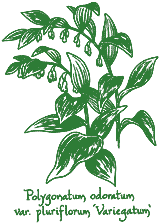
Imparting a classic woodland look wherever it’s planted, Solomon Seal’s native haunts stretch from Europe to Asia. Low arching prominently angled stems display broad, bright green ovate leaves, each distinguished by irregular creamy white margins, parallel veins and a stiff upright stance. A dramatic counterpoint to the exquisite foliage, pendent, pure white tubular bells are lily-scented and poised in axillary pairs.
Slowly creeping shallow rhizomes prefer moisture retentive humus-rich niches, though they adapt to just about any site except hot, dry ones.
Blooms April – May.
Size: 18" – 2' 0" high x 12" – 18" wide.
Zone 3/4.
Polystichum polyblepharum (F-0006)
Each $13.00
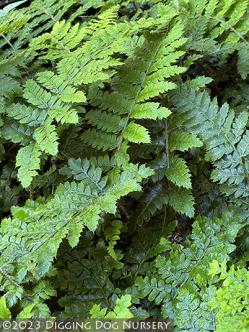
A versatile deer-proof denizen of Japan and South Korea, this lavish fern’s hallmark is the way its firm new croziers uniquely flop backwards in a relaxed tassel-like manner, and then eventually flatten upon maturity. Emerging from a central rosette and reaching up to 2 ft. in length, the shiny, bipinnate forest-green fronds are described by fine-hewn overlapping pinnae plus a soft dusting of copper-colored hairs. The Tassel Fern bestows mesmerizing evergreen sparkle to foundations, shady borders, naturalized areas and woodland plantings, where evenly moist soil with good drainage and dappled light ensure a healthy crown.
Size: 18" – 2' 0" high x 18" – 2' 0" wide.
Hardy to zone 6.
Polystichum setiferum ‘Herrenhausen’ (F-0030)
Each $13.00
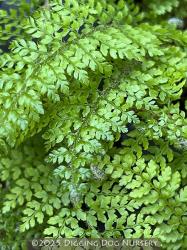
This elegant lacy-looking German cultivar has a mesmerizing Escher-esque appearance. Intricately cut, three-parted and dense, the overlapping dark green fronds forge a snug erect-arching rosette that remains evergreen in warmer climates but may need winter protection in colder locales. Unimpeded by deer and deep shade, Soft Shield Fern lends filigree-fine accents to bouquets and the shadows of borders, rockeries, cottage gardens or woodland plantings, where it partners well with Hellebores, but detests water-logged soil.
Size: 12" – 18" high x 12" – 18" wide.
Hardy to zone 6.
Potentilla
Cinquefoil
Resilient undemanding perennials cherished for their long season of blooms and attractive foliage, Potentillas endure poor soil, but insist on good drainage.
Potentilla ‘Arc En Ciel’ (P-1893)
Each $11.25
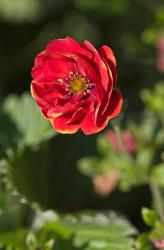
Resplendent double layers of ruffled deep red petals showcase irregular yellow-splashed margins on slender stems above a tidy trailing herbaceous foundation. Maintaining their opulent coloration, the saucy long-blooming flowers are loosely clustered and tempered by palmate strawberry-style deep green leaves that tumble over walls, down steps or edge a border.
Blooms June–August
Size: 12" – 18" high x 12" – 18" wide.
Hardy to zone 4.
Potentilla atrosanguinea (P-0120)
Each $11.25
Hailing from the lower slopes of the Himalayas, this strong perennial is named for its vibrant saucer-shaped blood red flowers borne on widely branching leafy stems. The neatly toothed long-petioled silver-gray foliage sports silky hairs on the upper surface and a white tomentose below. Well-suited for a front or midborder location, Potentilla atrosanguinea’s good-looking bearing performs best in cool summer areas and tolerates dry conditions once established.
Blooms June–August
Size: 18" – 2' 0" high x 12" – 2' 0" wide.
Hardy to zone 5.
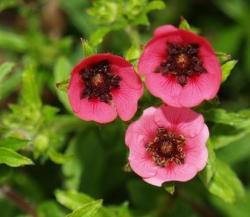
While the somewhat sprawling species traipses throughout Nepal's Himalayan Mountains, this vivacious nonshrubby cultivar makes a compact well-groomed perennial for your garden. A handsome low mound of hairy coarse-toothed strawberry-like foliage presents 1 in. wide rosy carmine flowers, each defined by a dark crimson eye and 5 heart-shaped lipstick-pretty petals on wiry branched stems. Venerating a former plant curator at the Royal Botanic Garden in Scotland, 'Ron McBeath' makes a flashy long blooming mate for Knautia 'Mars Midget' and Geranium sanguineum 'Album'.
Blooms May–August.
Size: 8" – 12" high x 15" – 2' 0" wide.
Hardy to zone 5.
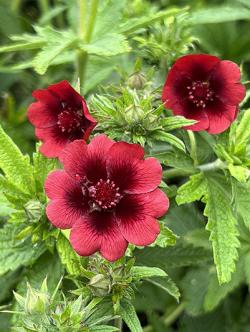
Don’t be surprised if you too fall under the spell of this undemanding, hearty perennial named for its sumptuously colored flowers and powerful presence. Lobed, strawberry-like, dark green foliage shapes a tidy clump beneath deep raspberry-red blooms with rich-as-velvet, ruby-black centers and bright white stamens.
Said to be useful in medicine and magic, the sun-loving Cinquefoil likes well drained soil and partial shade in hotter climates, obliges both cold and drought, and can be nestled into the rockery or atop a garden wall alongside Erysimum ‘Wenlock Beauty’.
Blooms June–August.
Size: 18" high x 2' 0" wide.
Hardy to zone 5.
Each $11.25
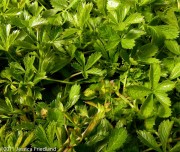
Dramatically etched by deep red eyes, soft apricot-colored flowers roost above handsome evergreen clumps of lobed greenery. This long-blooming charmer stays low to the ground as it scrambles between steps, spills over a border’s edge or cavorts with Helianthemum ‘St. Mary’s’.
Blooms June–September
Size: 6" high x 12" – 15" wide.
Hardy to zone 5.
Primula
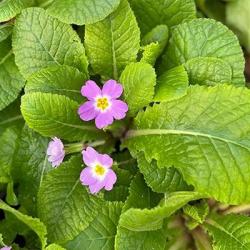
Primrose
Derived from the Italian primaverola, the name of this genus pays homage to the way its often early blossoms welcome spring. Many of the more than 400 species are at home in the moist climates of England, New Zealand and the Pacific Coast. The selections we offer are cold-hardy, yet will need ample water in warmer locales. Lovely planted en masse, Primroses are ideal for woodland gardens, damp borders, by a pond or streamside.
Hats off to the world-famous Primrose breeders at Barnhaven Nursery for this extravagant double-flowered 2016 introduction. Showcasing lavish purple shades that are somewhat darker on the flip sides, the layered posies sojourn atop natty fresh green rosettes of glistening crinkle-edged evergreen leaves. ′Purple Storm′s stalwart richly-hued persona lends a fanciful flare to Athyrium ‘Red Beauty’ and Pulmonaria ‘Little Star’.
Blooms March–April
Size: 6" – 8" high x 6" wide.
Zone 5b/6.
Another posh 2016 Barnhaven Primrose introduction, this hearty evergreen cultivar puts on the ritz with floriferous clusters of generously double flowers steeped in elusive soft blue hues. The beckoning blooms resemble wispy cloud-streaked pale skies above sturdy blush-colored stems and chipper spatulate spring green foliage. Cherished by pollinators for their early nectar, ′Vintage′s lovely flowers plus handsome textural rosette embellishes containers, pathway plantings and well-drained shade-dappled, humus-rich border edges.
Blooms March–April
Size: 6" – 8" high x 6" – 8" wide.
Zone 5b/6.
Introduced in 2014 by the internationally esteemed Primrose nursery Barnhaven, this tantalizing gem debuts fully-double cream-colored flowers with a subtle apricot blush and peerless panache. The plentiful long-blooming posies are nestled amid a large sumptuous clump of dimpled dark bronzy-green leaves. Claiming Primula ′Osiered Amber′ lineage, hardy ′Guernsey Cream′ enchants fellow shade and moisture lovers such as Asarum caudatum and Corydalis ‘China Blue’.
Blooms March–April
Size: 6" high x 6" wide.
Zone 5b/6.
Each $11.25
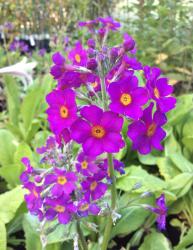
This irresistible Chinese candelabra was discovered by plant hunter George Forrest while exploring Yunnan’s Li-Chiang mountain range on a 1906 collecting trip. A textural basal green clump of large, finely serrated lanceolate foliage plus upright slightly curving sturdy stems host stylish, whorled rosy-carmine flowers that exhibit varied floral tints, yellowish orange eyes and frosty-looking calyces. Undemanding Primula beesiana promises a prismatic presence, especially when massed in a bright moist border or at water’s edge.
Blooms June–August
Size: 12" – 18" high x 12" – 15" wide.
Hardy to zone 5.
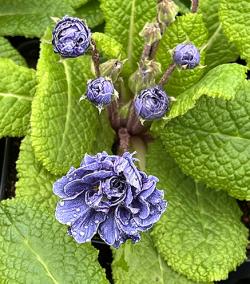
The beguiling bounty of ruffled and true-blue double posies dallies just above ‘Blue Sapphire’s reliable partially evergreen basal clump that’s defined by no-fuss textured green leaves. Hailing from France’s Barnhaven Nursery, this classic well-loved Primula can be cozied alongside fellow shade enthusiasts such as Pulmonaria ‘Benediction’ and Corydalis ‘China Blue’ for a sensational cerulean splash.
Blooms March–April
Size: 4" – 6" high x 6" wide.
Zone 5b/6.
Primula x bulleesiana (P-1046)
Each $11.25
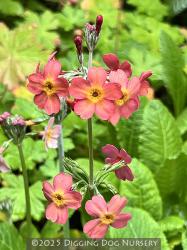
Parented by Primula bulleyana and Primula beesiana, this exceptional Primula possesses the best traits of both parents. Hoisted atop tall upright leafless stems, the tiered tightknit whorls showcase salver-shaped flowers unfurling in gorgeous hues that range from salmon-apricot to terracotta, but occasionally include cream, rose and lavender shades. The perfect-for-cutting candelabra-like blooms plus vigorous medium green basal rosette thrive in cool well-drained adequately-moist sites, but pout in summer heat and southeastern humidity.
Blooms June–July
Size: 18" – 2' 0" high x 12" – 18" wide.
Hardy to zone 4.
Each $11.25
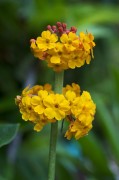
A treasured award-winning woodland perennial that brings tidings of sunny good cheer to damp shady nooks, this Himalayan native sends forth stout stems with 5 to 7 tiered whorls of crimson buds and scented bright orange-tinged butterscotch-colored flowers. The marvelous floral regale resides some 20 in. above a clumping semievergreen rosette, featuring red-tinged basal stalks and large round-tipped, oblong green leaves. Well-drained humus-rich soil helps maintain Primula bulleyana's steadfast undemanding stance.
Blooms June–August.
Size: 2' 0" high x 12" – 15" wide.
Hardy to zone 5.
Primula capitata ssp. mooreana (P-0212)
Each $11.25
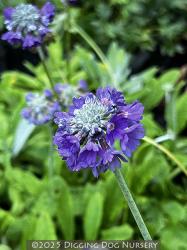
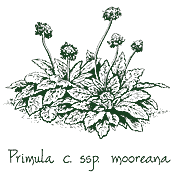
Native to the coniferous forests of Tibet and southwestern China, Primula capitata was once used to cure headaches and please the palette in thick soups and rice. This species is named for its blue-violet, pincushionlike flowers that open face down in early spring.
We plant it by paths or steps in shady rock gardens so that we can sit and look at the silvery powder on the green stems. It can take full sun, but only if planted in a moist loam or boggy location.
Blooms April–June.
Size: 8" – 12" high x 10" wide.
Hardy to zone 5.
Primula capitata ‘Salvana’ (P-2001)
Each $11.25
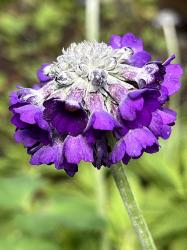
Introduced by Jelitto Perennial Seeds in 2016, this splendid low growing Primula sports a soft-looking pewter-hued powder that dusts erect flower stalks as well as the top of each unique pin- cushion-style bloom. The attractive, low green basal rosette of oblong, white-haired serrated foliage anchors domed blue-violet clusters, each densely packed with tiny trumpet-like blossoms. Steeped in fetching detail, ‘Salvana’ yearns for an easily viewed cranny, cool summers and evenly moist well draining soil.
Blooms May–June
Size: 15" high x 12" wide.
Hardy to zone 4.
Lounging in damp alpine meadows and alongside the rivers of southwestern Sichuan, this AGM winner touts fiery hued flowers coupled with a dainty demeanor. Pillowed by whitish farina-coated stems, open flower heads hold burnt tangerine and copper-colored blooms above a finely toothed medium green basal clump that’s not especially long-lived, though it effortlessly reseeds to ensure future generations. Its floral brilliance deserves a front row seat in well-drained borders or easily viewed patio containers.
Blooms May–June
Size: 12" – 15" high x 10" wide.
Hardy to zone 5.
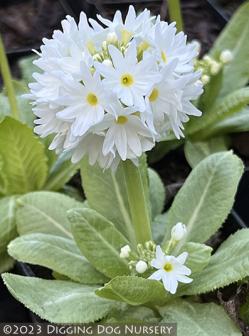
This endearing Primula’s native haunts include Afghanistan, the Himalayas and western China. A reliable harbinger of spring, snug winter buds reveal fragrant, 2 in. wide snowy white globes packed with miniature yellow-centered flowers on short stocky stems. Undeterred by cold weather, it’s long, obtuse lanceolate leaves form a nonfussy, handsome green clump that prefers dappled shade plus moist humus-rich nooks.
Blooms March–May
Size: 12" high x 10" wide.
Hardy to zone 4.
Primula denticulata ‘Blue Selection’ (P-0860)
Each $11.25
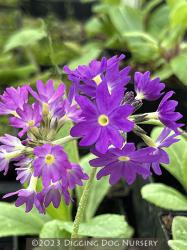
If a fairy majorette was out to beat the band, she’d be carrying the adorable dark blue orbs of this Primula as her baton. Formed from plentiful, yellow-eyed, funnel-shaped florets, the dense 2 in. globes rest on stout stems above a textured leafy base. A winner for the shady border, plant a drift of this enduring selection with Athyrium ‘Regal Red’ behind.
Blooms March–April
Size: 12" high x 9" – 12" wide.
Hardy to zone 4.
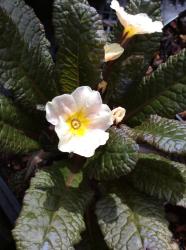
Cushioned by a dashing dark foil of deeply veined purplish bronze-suffused foliage, the dainty soft apricot-hued blooms promote slightly ruffled creamy edges and golden eyes upon short firm stems. ‘Dunbeg’s hardy, mostly evergreen habit is ideal in containers or easily viewed jewel-box plantings, delivering spectacular colors plus flowers galore, while savoring bright humus-rich, well-drained alcoves.
Blooms February–April
Size: 6" high x 6" wide.
Hardy to zone 4.
Primula elatior x ‘Silver Lace Purple’ (P-1960)
Each $11.25
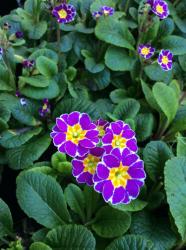
Elaborate floral detail is this long-lived Primula’s hallmark. A 2009 Jelitto Perennial Seeds introduction, ‘Silver Lace Purple’ showcases ornate clusters of silver-rimmed, bright royal-purple flowers inlaid with golden eyes on steady stems. Well-suited for planting in rock work, along a path or near a bench, the noteworthy, oval-shaped semievergreen leaves comprise thick, compact midgreen rosettes that can be divided every 3 or 4 years.
Blooms April–May
Size: 10" – 12" high x 12" wide.
Hardy to zone 5.
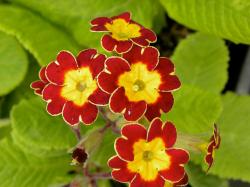
Centered by a golden pool, each sumptuous flower holds overlapping mahogany red petals, exquisitely rimmed in gilded hues. Packed floral clusters present open-faced circular blooms on short stout stems above a trim lettuce green bed of rounded basal foliage that’s wavy edged and serrated. Conjuring the Victorian era’s ornate beauty, this hardy undemanding Primula can garnish a pathway, seating area, easily viewed container or any moist cranny with dappled light and ample airflow.
Blooms April–May.
Size: 10" – 12" high x 12" wide.
Hardy to zone 5.
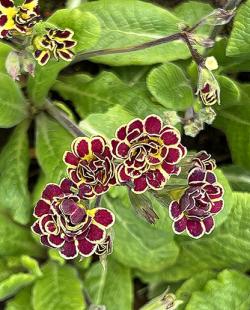
Steeped in opulence, fully double deep maroon blossoms are sweetly perfumed and spangled with glittery yellow margins and eyes. The long blooming flowers appear in tight clusters above scalloped oval-shaped pale green leaves that compose a sturdy textural clump. Well-suited for an intimate spot by a favored bench, this gorgeous seldom offered Primula polyantha cross appreciates adequate moisture and supplemental compost.
Blooms March–June
Size: 9" – 12" high x 6" – 12" wide.
Hardy to zone 3.
Each $11.25
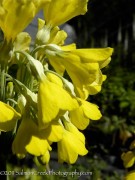
This long-lived, robust native of shady Tibetan bogs boasts some of the largest flowers in the genus. From a mound of serrated green leaves, older mature plants display as many as 80 citron-colored blooms per umbel on tall stems, creating a virtual festival of fragrance.
Blooms June?August
Size: 2' 0" – 2-1/2' high x 12" wide.
Hardy to zone 6.
Primula marginata ‘Mauve Mist’ (P-1815)
OUT OF PRODUCTION AT THIS TIME
Email me when this plant is available
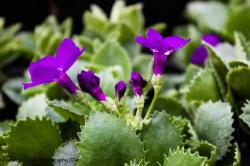
Dawdling throughout the limestone-rich areas of France and Italy's Maritime and Cottian Alps, this unique evergreen Primula promotes low growing waxy rosettes defined by thick deep-toothed blue-green leaves dusted with an alluring silvery white powder. Large, cut-flower-worthy clusters of fragrant flat-faced lavender-colored flowers further enhance the lovely soft foliar shades. Cherished as one of the most attractive early spring Primulas for an alpine garden, rockery, trough or pot, easily grown 'Mauve Mist' develops from a reliable woody rootstock, fends off deer and rabbits, and relishes a brightly shaded, sharp draining abode.
Blooms March–April.
Size: 6" – 8" high x 6" – 8" wide.
Hardy to zone 3.
Primula x polyantha ‘Dawn Ansell’ (P-1894)
Each $12.75
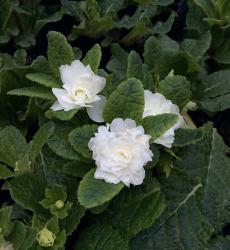
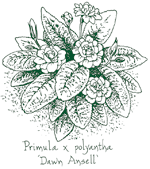
A cottage garden darling introduced by Welsh plant breeder Dr. Cecil Jones, easily cultivated ‘Dawn Ansell’ charms us with fluffy double white flowers, reminiscent of miniature rose blossoms. The luminous clustered blooms are nestled into a unique ruff of small green leaves above larger crinkled rich green foliage that fashions a vigorous spreading clump. Celebrating an early and long flowering period, this Primula vulgaris and Primula veris cross cherishes bright shady nooks with moist humus enriched well draining soil.
Blooms February–April
Size: 6" high x 6" – 8" wide.
Hardy to zone 5.
Primula polyanthus ‘Francesca’ (P-2200)
Each $11.75
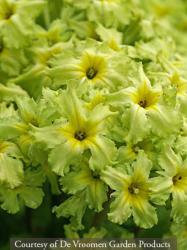
Touted as the longest blooming of the species, ‘Francesca’s unique signature is her plentiful ruffled celadon-green flowers with glowing yellow eyes. Poised on erect stems well above a textural deep green rosette, the exquisite floral display wafts a sweet perfume plus lasts for several weeks in cut arrangements. This trim compact Primula makes a steadfast semievergreen addition to containers, courtyards and border edges, while relishing bright shade, adequate moisture and chums like Brunnera ‘Mr. Morse’ or Corydalis ‘Porcelain Blue’.
Blooms mid-March–June
Size: 12" – 14" high x 12" wide.
Hardy to zone 5.
A denizen of northwest China, this delightful long-lived perennial debuts whorled rosy red blooms, each with 5 notched petals clutched by a striking orange eye and variable pink to burgundy overtones. The adorable blooms linger on tall slender stems above an attractive, cold-hardy fuzzy-backed mound of palmate scallop-edged green foliage. Though P. polyneura’s robust clump-forming habit is easily cultivated, it does prefer cool shade, plentiful humus and moist well-drained soil.
Blooms April–May
Size: 15" high x 12" wide.
Hardy to zone 4.
Primula x pubescens ‘Kaleidoscope Mix’ (P-2328)
Each $11.75
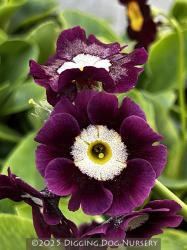
A 2016 Jelitto Perennial Seeds introduction, this hardy AGM champ proffers gorgeous bouquet-like clustered flowers perched atop short stalks and thick round-tipped grayish-green leaves. Prominent creamy-yellow centers heighten the large blooms, which unfurl vibrant, variable colors, including yellow, peach, pink, lilac, violet, maroon and dark chocolate hues. Prized by bees, butterflies and floral designers, durable ‘Kaleidoscope Mix’ can be ensconced in rockeries, shady borders and containers with partners such as Alchemilla alpina and Pulmonaria ‘Little Star’. Consider planting a sweep of them beneath wide-branching trees, where bright shade, rich soil and good drainage will delight their handsome evergreen rosettes.
Blooms April–June
Size: 6" – 8" high x 8" – 10" wide.
Hardy to zone 5.
Primula rosea ‘Gigas’ (P-1131)
Each $11.25
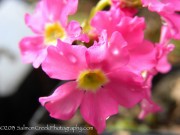
One of the loveliest Primulas, ‘Gigas’ pretties up the garden in early spring with carmine-pink flowers. Adorning stout stems, numerous brightly colored blooms gather in good-sized umbels before the rosettes of notched green leaves fully develop. Tuck this small-scale performer into the front row amid Luzula ‘Solar Flair’ and Pulmonaria ‘Little Star’.
Blooms March–April.
Size: 8" – 10" high x 9" wide.
Hardy to zone 5.
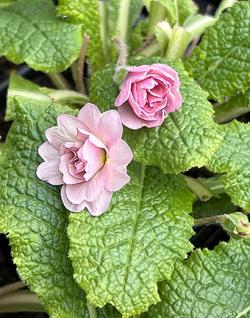
Reminiscent of petite rose buds, the perfumed soft pink double flowers clasp short upright stalks just above crinkled, oblong green leaves that shape a spunky semievergreen rosette. This cherished long-lived Primula brings an old-fashioned feminine touch to woodland peripheries, cottage gardens and containers plus any other somewhat shady, well-drained humus-rich nook.
Blooms March–April
Size: 4" – 6" high x 6" wide.
Hardy to zone 4.
Each $11.25
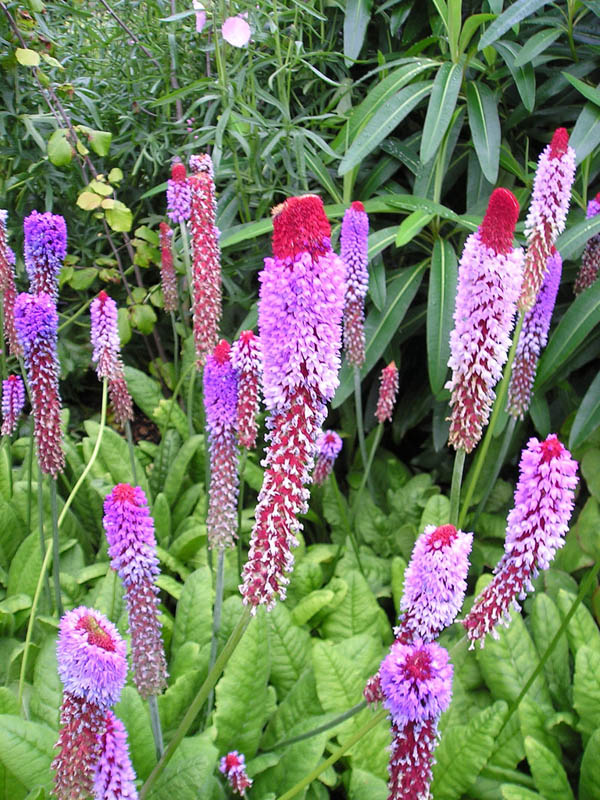
The pyramidal, Kniphofia-like flowers of this highly unusual Primula are bicolored, with purple at the base and reddish fuchsia at the apex. Perched on 15 in. stalks above oblong, blunt-tipped green basal foliage, the fanciful blooms provide perfumed accents either in large drifts or surrounded by Aruncus aethusifolius and Epimedium ‘Purple Pixie’.
Blooms June–July
Size: 12" – 15" high x 10" wide.
Hardy to zone 6.
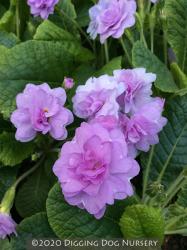
Steeped in charm and easily grown, this hard-to-find old-fashioned Primrose promises to please with nearly evergreen foliage and a blooming season, extending from spring to fall. A plentiful showing of rose-like buds and splendid lilac-pink double flowers adorn broad textured spring green foliage that forms a generous long-lived clump.
Bright shade, well-drained soil and above average moisture will ensure its success.
Blooms May – September.
Size: 6" – 8" high x 6" – 8" wide.
Hardy to zone 6.
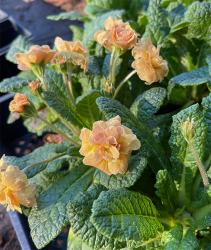
Certain to cajole a smile, this endearing semievergreen cultivar was bred in the 1950s by Primula maven Florence Bellis, who resided near Portland, Oregon. ‘Sunshine Susie’ has a lot to flaunt: fully-double posies that unfurl for months plus a long-lived amenable bent that tolerates heat and drought more than most Primulas. Resembling miniature roses, oodles of clustered, 1 in. wide buttercup-yellow flowers don pink and salmon shades as they mature above winsome basal rosettes of crinkled oval-shaped lush greenery. Enriched soil with good drainage and consistent moisture sustains ‘Susie’s sunny mood.
Blooms March–June
Size: 6" – 8" high x 6" – 8" wide.
Hardy to zone 4.
Each $11.25
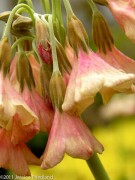
Slender stems elevate white-powdered calyces and pendent clusters of lampshade-like flowers, which range in color from soft violet-pink to claret. Indigenous to Tibet’s alpine meadows, this charmer’s narrow round-tipped green leaves are oblong and serrated, crafting lustrous rosettes that flourish in a bright, yet cool locale with moist well-drained soil.
Blooms June–July
Size: 12" – 16" high x 12" wide.
Hardy to zone 5.
Pulmonaria
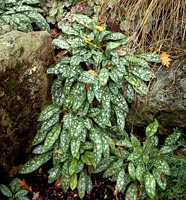
Lungwort
One of the earliest plants to bloom, you can be picking Lungwort’s urn-shaped flowers in February while the rest of the garden still slumbers. Easy-to-grow Pulmonarias prefer the lacy light of a woodland setting and cool moist soil. They are excellent noninvasive ground covers.
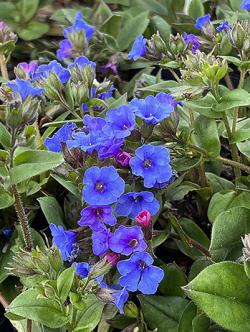
Lance-shaped dark green leaves create a handsome solid-colored bed for nodding clusters of vivid cobalt blue funnel-shaped flowers atop short stalks. Granted a four star score at the Chicago Botanic Garden’s Pulmonaria trials, ‘Blaues Meer’s vigorous enduring clump makes a verdant statement beneath Spiraea ‘Ogon’.
Blooms February-April
Size: 8" – 10" high x 18" wide.
Hardy to zone 4.
Here’s one type of frost that should be welcomed into gardens with open arms. The mildew resistant foliage of this compact species has a green midrib and is irregularly splashed with so much silver that there is often more silver than apple green. Such “frost” complements the soft rose-colored flowers, which fade to violet-blue. The Maple-like foliage of Kirengeshoma palmata makes it an interesting neighbor for ‘Apple Frost’.
Blooms March–April.
Size: 12" high x 18" wide.
Hardy to zone 4.
Pulmonaria ‘Benediction’ (P-0550)
Each $11.75
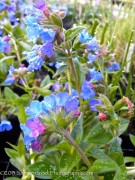
The lush foliage of ‘Benediction’, with its widely spaced silver spots, ranks above that of other dark green-leafed Pulmonarias. A favorite for massing, we especially enjoy the profusion of deep blue flowers when planted next to Epimedium x rubrum and Euphorbia ‘Great Dixter’.
Blooms early March–May.
Size: 10" high x 18" wide.
Hardy to zone 4.

The raspberry-pink flower of this species is a new color for Pulmonarias. Against the sparkling, mostly silver leaves with slightly ruffled, mottled green margins, the flowers are as enticing as a bowl of fresh berries and cream. Plant in large drifts and watch the flowers—and your garden—turn purple with age.
Blooms March–April.
Size: 12" high x 18" wide.
Hardy to zone 4.
Pulmonaria ‘Blue Ensign’ (P-2122)
Each $11.75
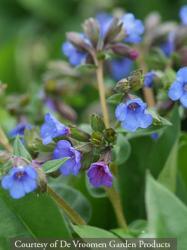
A chance seedling discovered in the early 1990s at England’s Wisley Botanical Garden, this dependable AGM victor is considered one of the best cultivated lungworts. Broad, fuzzy dark green leaves distinguish the winsome robust clump beneath vibrant, flared gentian-blue flowers. Enticing plant enthusiasts plus early spring’s hungry honeybees, ‘Blue Ensign’s clustered, nectar-rich gala lends electrifying accents to shady borders amid Primula ‘Double Lilac’, spring-blooming bulbs such as miniature daffodils and Athyrium ‘Apple Court’.
Blooms March–April
Size: 10" – 12" high x 15" wide.
Hardy to zone 5.
Pulmonaria ‘Diana Clare’ (P-2000)
Each $11.75
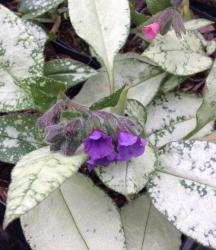
Spotted by highly regarded British plant maven Bob Brown and named in honor of his wife, this robust P. longifolia hybrid is hailed as one of the best silver-leafed Pulmonaria for hot locales. Dashing, long pointed leaves are initially rimmed with a stippled pewter and green border, which quickly morphs into solid sterling silver. A classy early spring charmer, ‘Diana Clare’s well-tailored clump cushions plentiful, perky dark violet blooms, aging to cobalt-blue on short sturdy stalks.
Blooms late February–April
Size: 10" high x 12" – 18" wide.
Hardy to zone 4.
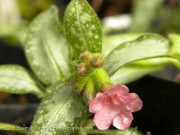
With a metallic effulgence that’s reminiscent of mercury, this Pulmonaria is a refined inspiration for the darker corners of your garden. Its lance-shaped leaves are completely frosted in silver except for a pencil-thin, deep green edge. Impressively mildew resistant, ‘Excalibur’s striking foliage is graced by charming rosy pink and blue flowers long before spring’s treasure trove of bloom gets underway. (pp#8958).
Blooms March–May.
Size: 10" high x 20" wide.
Hardy to zone 4.
With foliage that’s more diminutive than other Pulmonarias, this compact Lungwort can easily squeeze into an intimate space. While the deep cobalt blue of the flowers fades to a softer purple, the distinct silver spots of the narrow leaves remain intense and dazzling. We let ‘Little Star’ skirt the ground beneath the gilded foliage of Clematis ‘Stolwijk Gold’ for a dramatic foliar contrast.
Blooms early March – April.
Size: 8" high x 12" wide.
Hardy to zone 4.
Pulmonaria longifolia ssp. cevennensis (P-0551)
OUT OF PRODUCTION AT THIS TIME
Email me when this plant is available
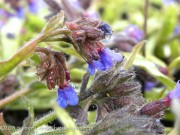
This marvelous subspecies from the Cevennes region of France will perk up any shady spot with its slender, silver mottled leaves that are spear-shaped and distinctively large, reaching up to 2 ft. in length. Wider than most longifolia species, good-sized cobalt blue flowers fade to violet atop a mounding, highly mildew resistant base.
Blooms March – April.
Size: 18" high x 2-1/2' wide.
Hardy to zone 4.
A beloved older cultivar named for a noted British plantsman, this boldly marked Pulmonaria boasts a dashing mound of long narrow, steel-splotched dark green leaves and clustered bright blue blooms. Its distinguished good looks, abundant full-toned flowers and easily maintained habit earned ‘Bertram Anderson’ a perfect score at the Chicago Botanic Garden’s Pulmonaria Trials and should give you plenty of reason to welcome him into your favorite shady nook.
Blooms February–April
Size: 10" high x 12" wide.
Hardy to zone 4.
Each $11.75
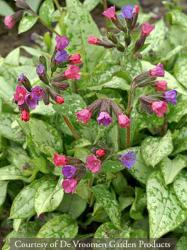
Solidly sheened with silver, ‘Majesté’s thick leafage is extremely elegant—even without any flowers. But in early spring, short arching sprays of both blue and pink blooms make an appearance and, against the leaves, it’s a color-rich delight. Omphalodes ‘Cherry Ingram’s greenery offers a vivid contrast.
Blooms March–April.
Size: 12" high x 15" wide.
Hardy to zone 4.
Each $11.75
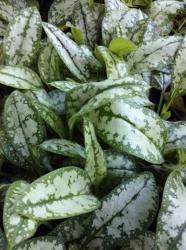
Good-sized dark green ovate foliage, heavily tattooed with irregular slate-colored blotches, patches and spots, lolls beneath a delicate presentation of funnel-shaped pale ice blue blooms on short stems. ‘Opal’s cool composed visage can be sited amid wild gingers and backed by Anemone leveillei.
Blooms March–May
Size: 6" – 12" high x 6" – 18" wide.
Hardy to zone 4.
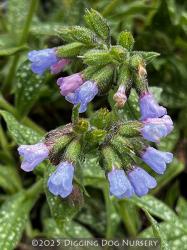
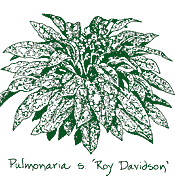
This prized Pulmonaria’s periwinkle blue flowers stand 6 to 8 proud inches above handsome, evenly silver-blotched foliage. Broad, Hosta-like green leaves are slightly rough to the touch. It works well as a ground cover in a shaded rock garden and blooms for an exceptionally long time.
Blooms mid-February–May.
Size: 12" high x 18" wide.
Hardy to zone 4.
Awarded 4 stars at the Chicago Botanic Garden's Pulmonaria Trails, 'Dora Bielefeld' delivers pretty rose pink funnel-shaped flowers atop a consistently well-groomed apple green mound with wide-spaced pearly speckles and plenty of hearty gusto. Her decidedly feminine blooms seldom fade to purple and make a lovely addition to companions such as Helleborus 'Picotee Lady' and Aruncus aethusifolius.
Blooms February–April.
Size: 12" – 15" high x 15" wide.
Hardy to zone 4.
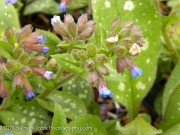
A friend in Montana tells his wife every night that what she’s cooking for dinner is his favorite, and he means it. We’re like that with Pulmonarias. This one is our favorite too—for its flower. It’s the truest, the showiest, the brightest blue, and the earliest to bloom. Large, richly green foliage is dappled in swank grays and silvers.
Blooms February–April.
Size: 12" high x 18" wide.
Hardy to zone 4.
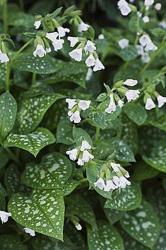
Pristine, soft white flowers crown mercury-dappled and freckled deep green leaves that are broader than other saccharata species. Resembling ‘Roy Davidson’ in terms of spotted foliage, this Pulmonaria is more open, bearing its flowers more loosely and later in the spring.
Blooms February–April
Size: 10" high x 12" wide.
Hardy to zone 4.
Ruffle-edged, mercury-hued and randomly dappled with green, the spectacular long slender leaves grow upward then gracefully arch downward. A Dan Heims hybrid between Pulmonaria . ‘Redstart’ and Pulmonaria . ‘Excalibur’, this posh steadfast shade dweller debuts colorful clusters of dainty drooping funnel-shaped blooms, which open pink, then turn blue, perched atop short stems.
Blooms March–April
Size: 12" high x 18" wide.
Hardy to zone 4.
Pulmonaria ‘Silver Bouquet’ (P-2109)
Each $11.75
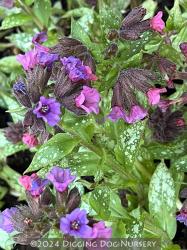
Bred by Pulmonaria aficionado Janet Egger and introduced by Terra Nova Nursery in 2009, this mounding silver-leafed cultivar inherits a welcome heat and mildew-resistant bent from its Pulmonaria longifolia ssp. cevennensis heritage. Showcasing green edges and occasional mottling, long, lustrous, lance-shaped leaves make a posh glittering statement even before the flared bell-like pink blooms take on bright blue-violet shades. ‘Silver Bouquet’s stalwart clump can edge a shady border where it shrugs off slugs and deer plus mingles with Athyrium ‘Ghost’, Anemone leveillei and some spring bulbs. (pp#20,059)
Blooms March–May
Size: 8" – 10" high x 15" – 20" wide.
Hardy to zone 4.
Pulmonaria ‘Trevi Fountain’ (P-1961)
Each $11.75
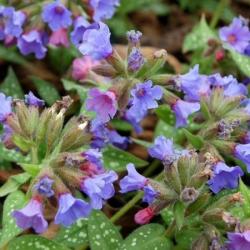
A winning Terra Nova introduction between Pulmonaria longifolia ‘Bertram Anderson’ and Pulmonaria vallarsae ‘Margery Fish’, this energetic Pulmonaria serves generous portions of clustered, large royal-blue flowers. The princely deer and mildew-resistant mound is defined by lance-shaped green foliage peppered with plentiful silver spots. Exhibiting good heat and humidity tolerance, ‘Trevi Fountain’ is a superb choice for Southern gardens as well as other woodland settings throughout the country. (pp#13,047)
Blooms March–April
Size: 12" high x 18" – 2' 0" wide.
Hardy to zone 4.
This floriferous European native heralds spring as enchanting open bell-shaped white blooms with lambent golden-yellow bosses unfurl atop short fuzzy stalks. Deeply divided, fern-like and silken-haired, the winsome pewter-green basal foliage cushions ′Alba′s large, 6-petalled Crocus-style blossoms, which morph into ornate fluffy spherical seed heads, extending the floral fanfare. An AGM recipient and a honey bee’s buddy, Pasque Flower can dwell in containers, rockeries, cottage gardens or border frontage, where it braves bunnies, prefers cool summers and craves fertile, sharply drained nooks plus consistent moisture during hot summers.
Blooms March–April
Size: 12" high x 12" wide.
Hardy to zone 5.
Pulsatilla vulgaris ‘Rosen Glocke’ (P-1897)
Each $10.75
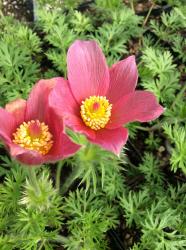
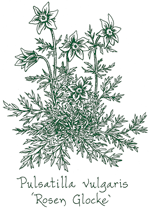
Endemic to the calcium-rich, dry sunny moors of England, western France and Sweden, Pulsatilla is Latin for ‘sway’ and refers to the delightful crocus-like nodding spring flowers that easily frolic in a breeze. Tucked amid a veil of silky hairs, down-cloaked bright cerise pink blossoms reside upon dew-catching feathery tuffets defined by filigree-style soft green leaves. A radiant central cluster of yellow stamens and decorative seed heads furnish additional enticements, while sharp drainage and fertile alkaline niches in the rockery or a favored container keep this precious perennial satisfied.
Blooms March–April
Size: 12" high x 12" wide.
Hardy to zone 5.







